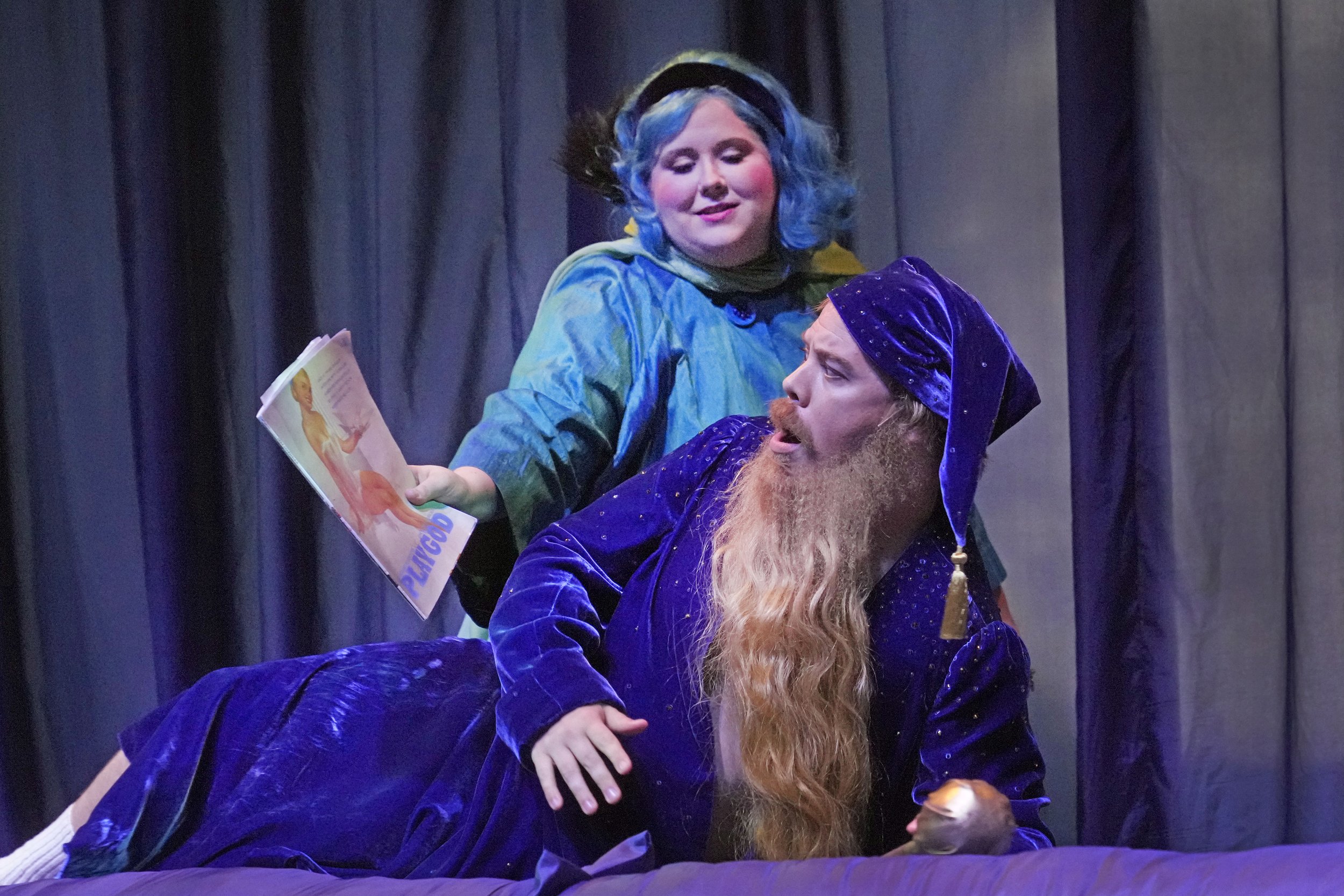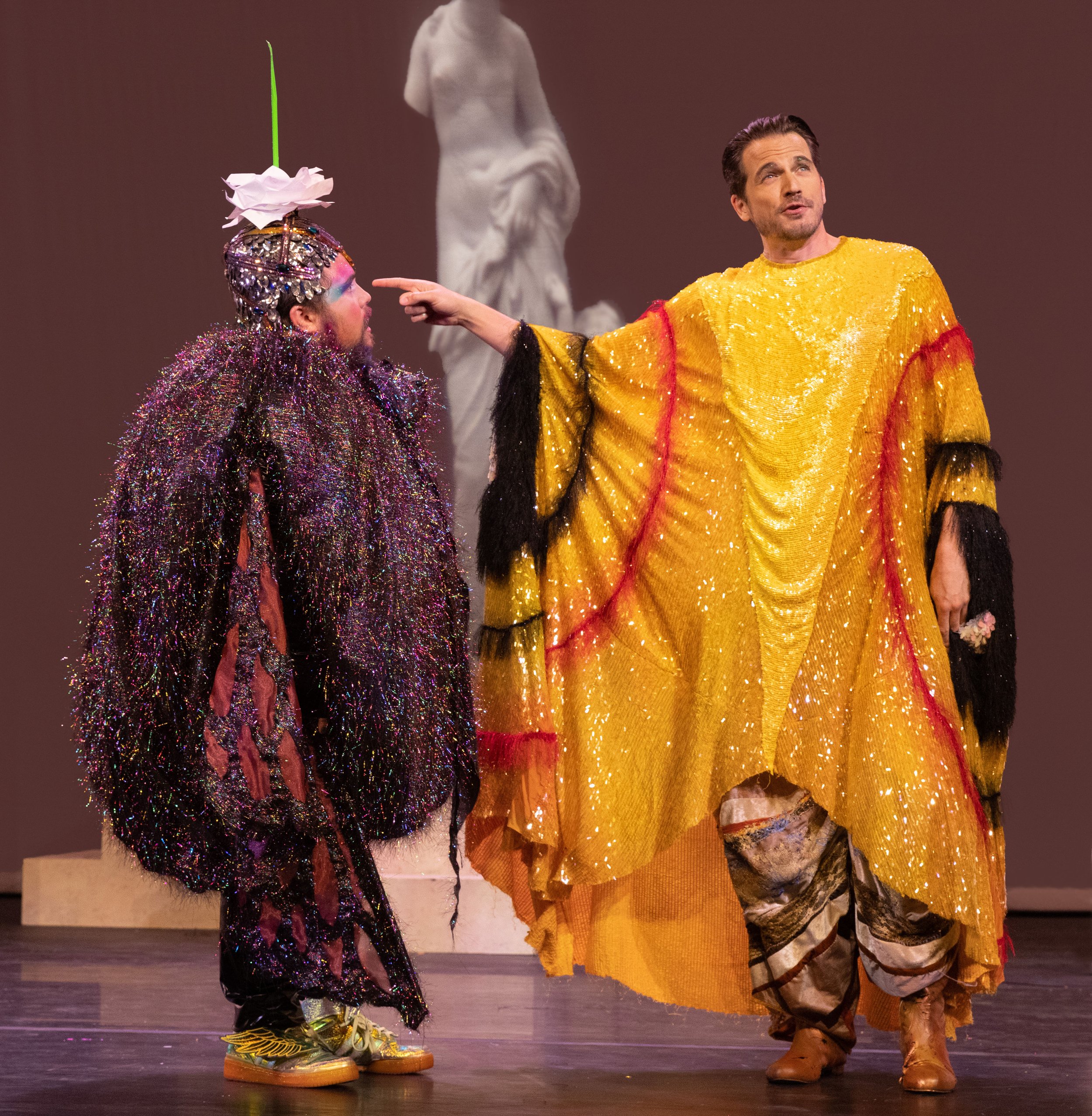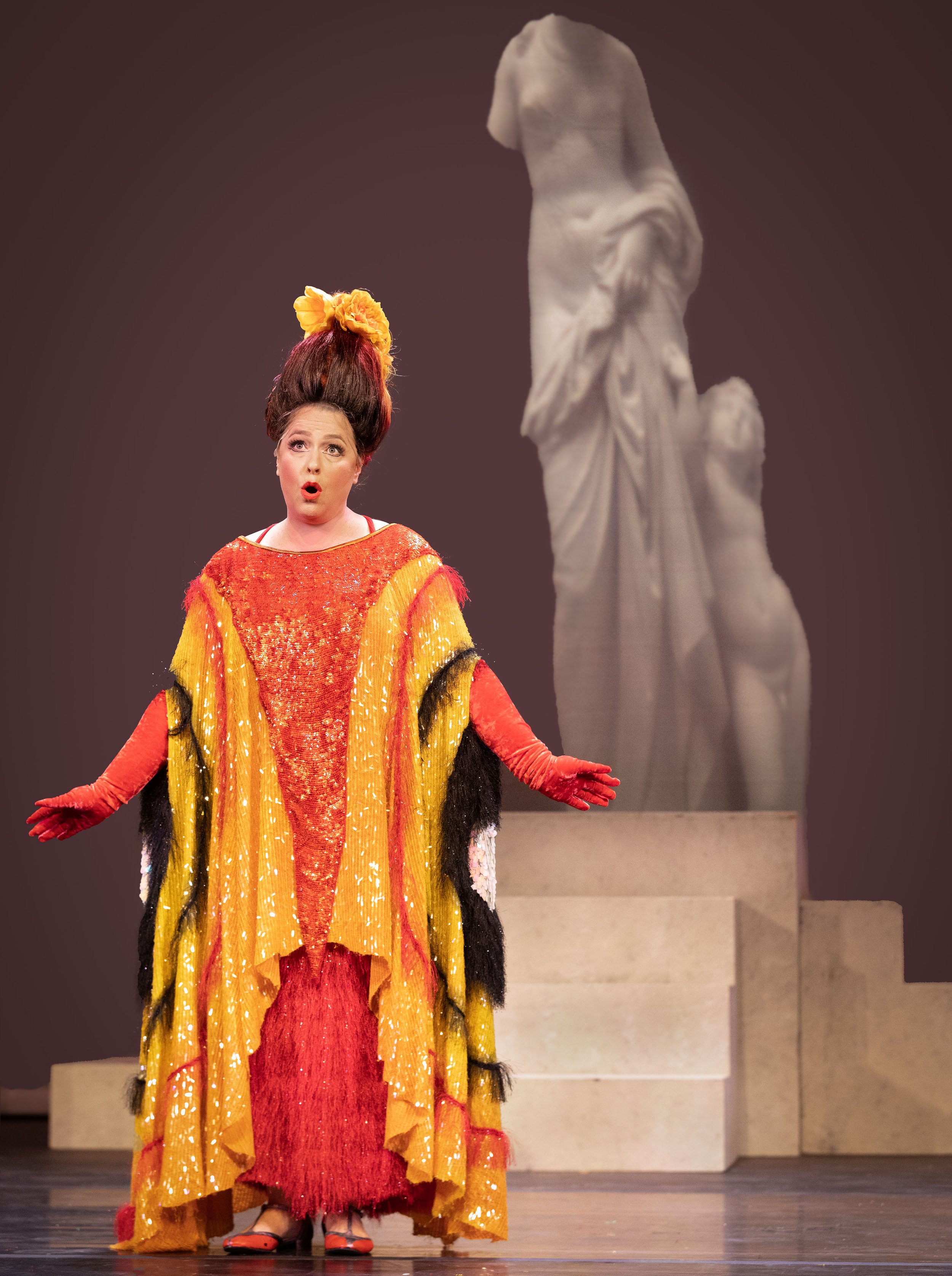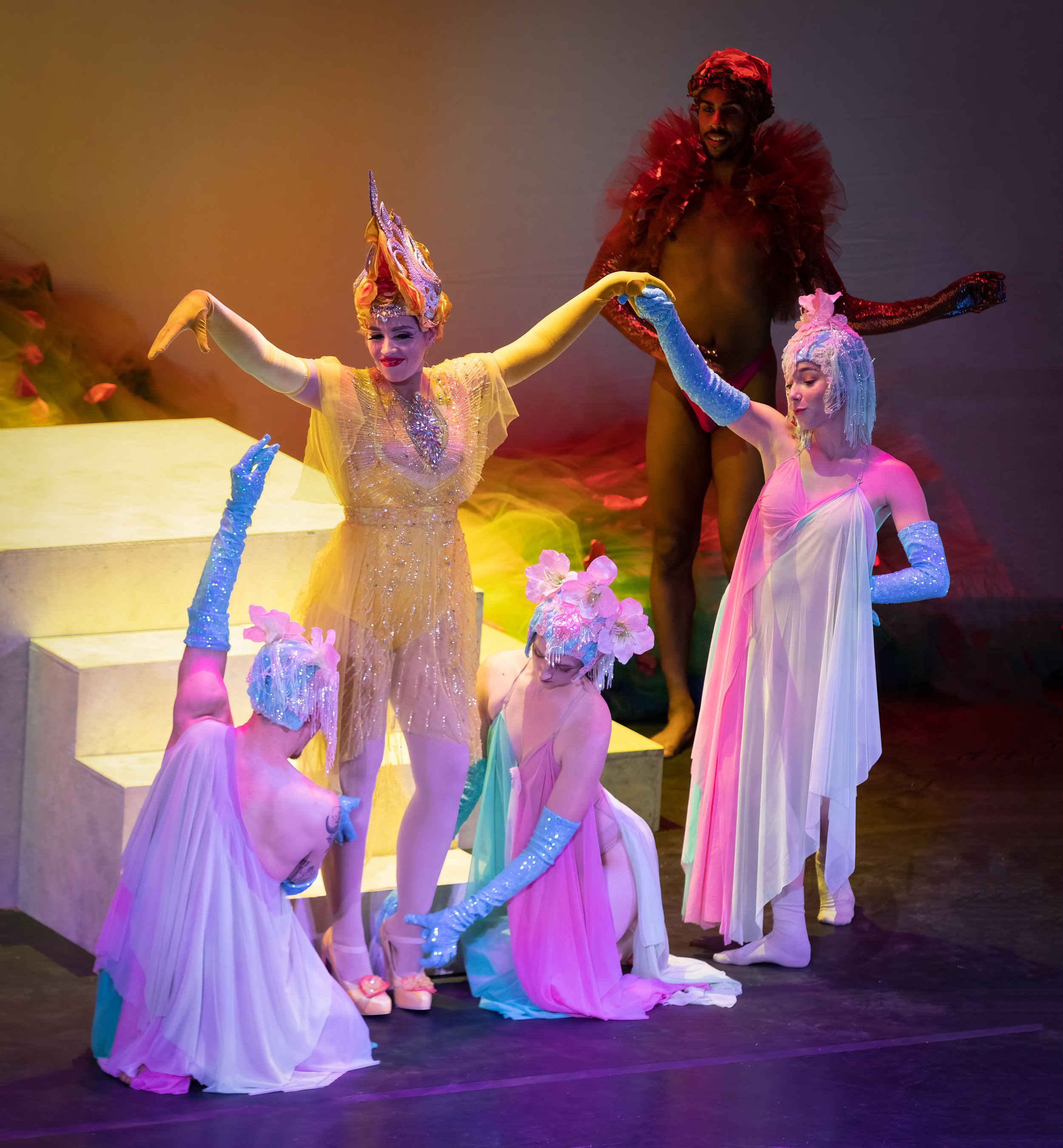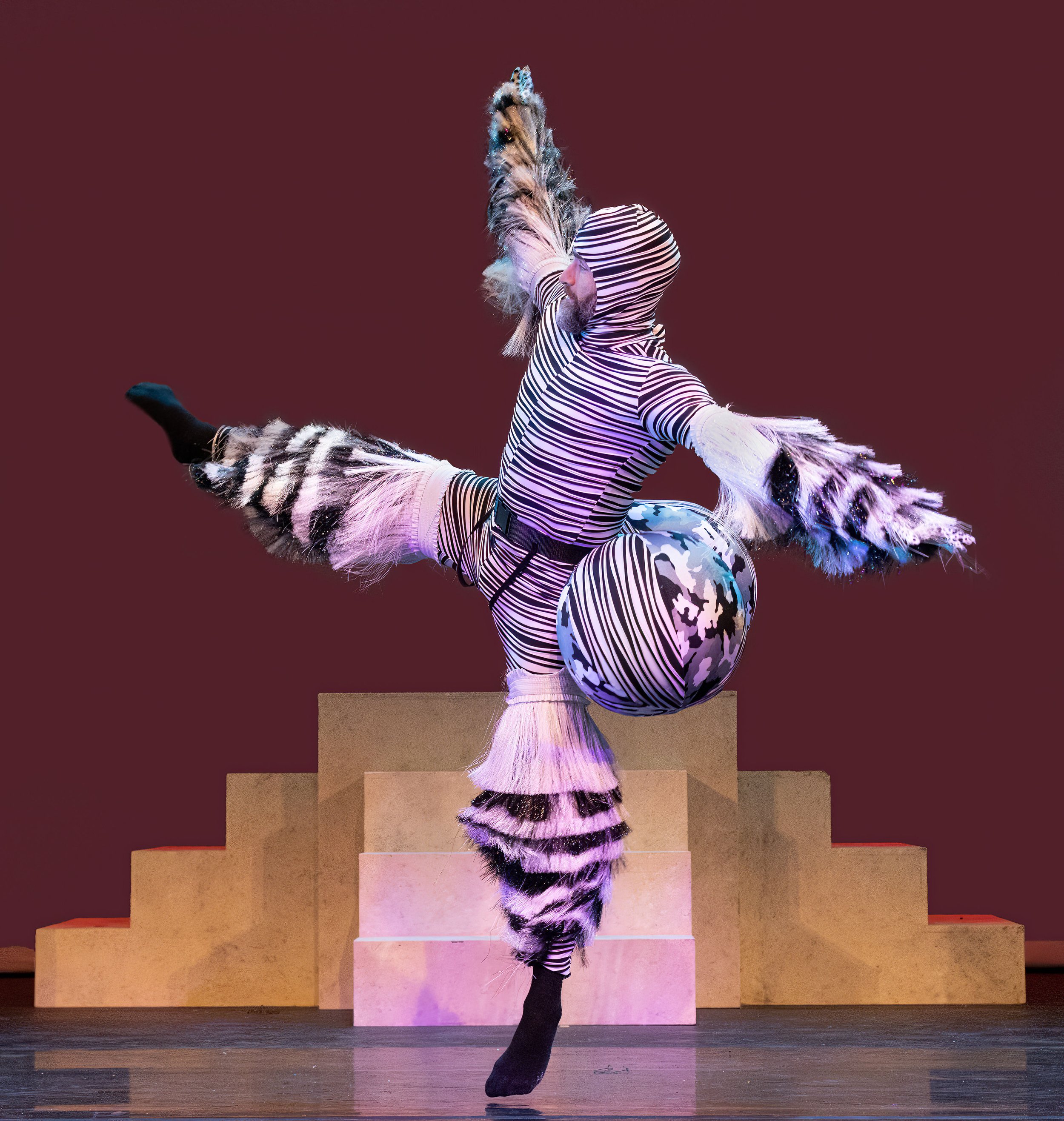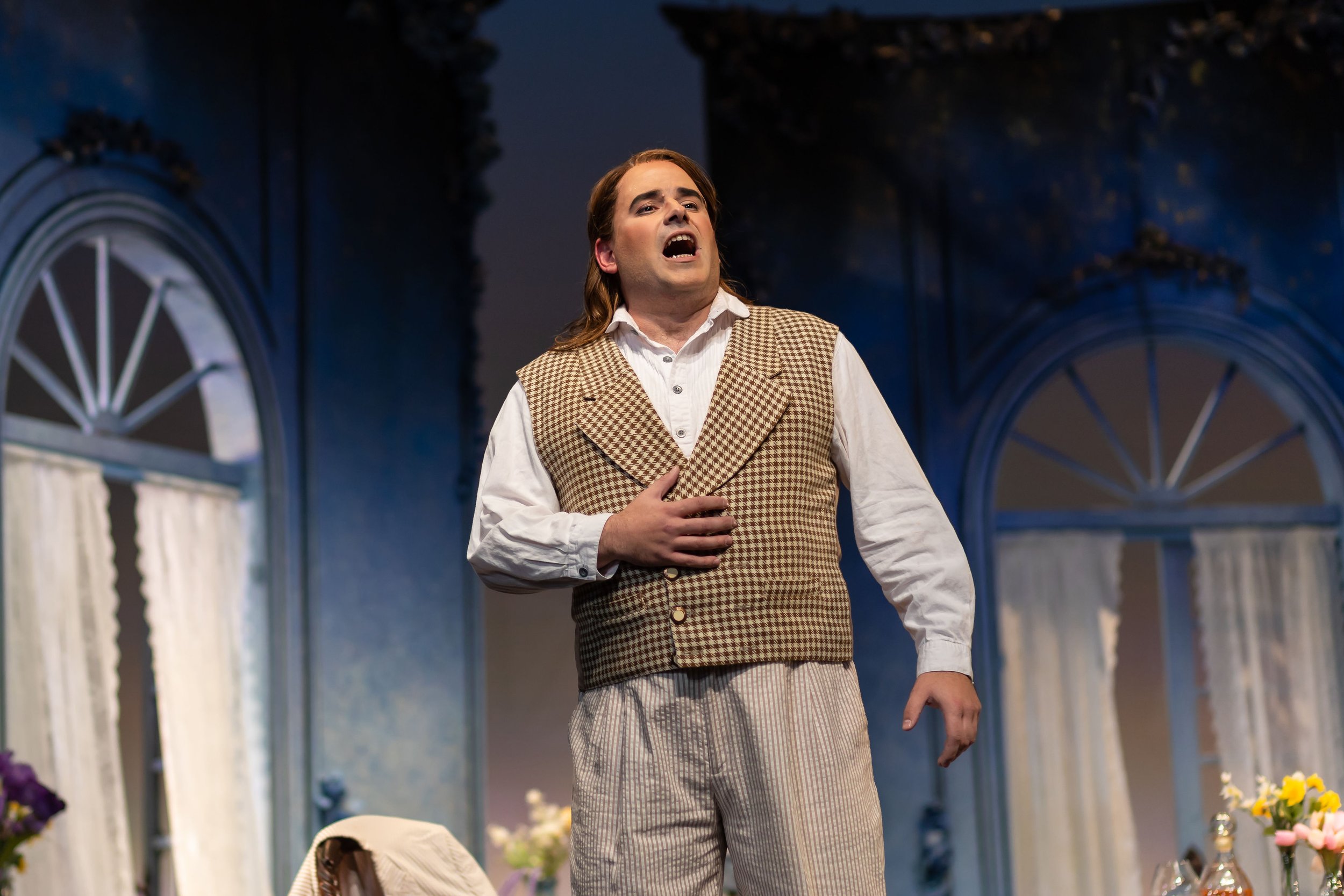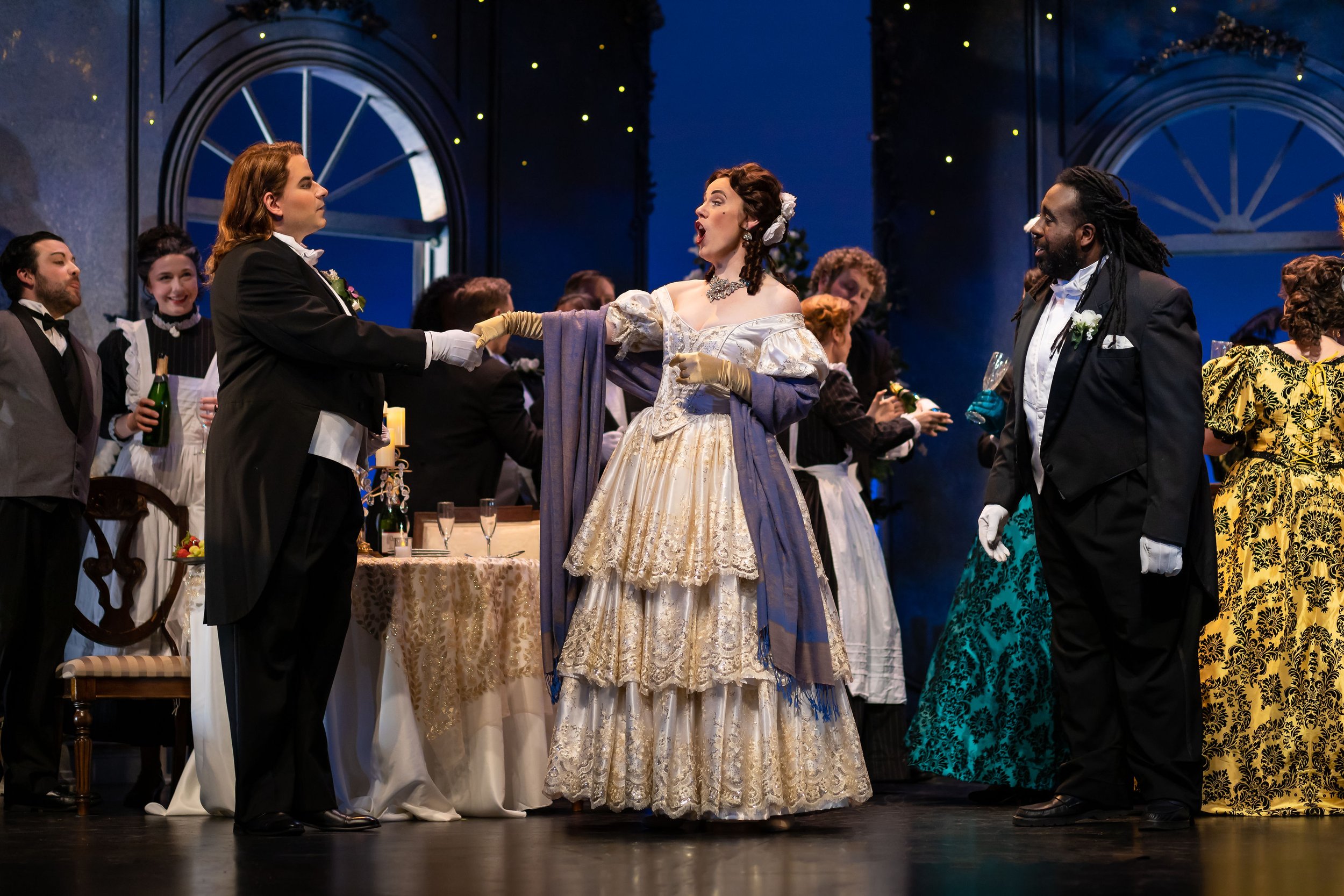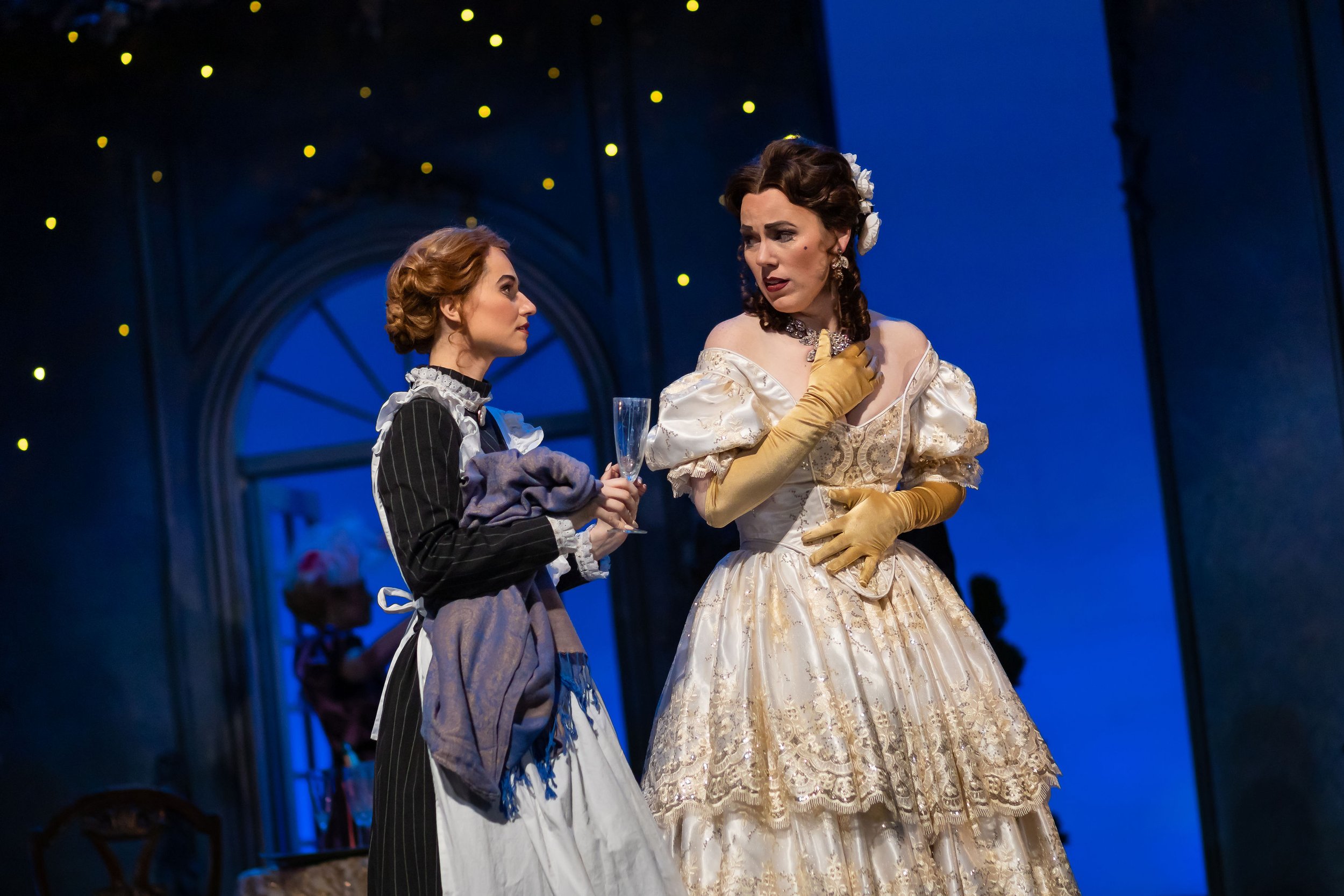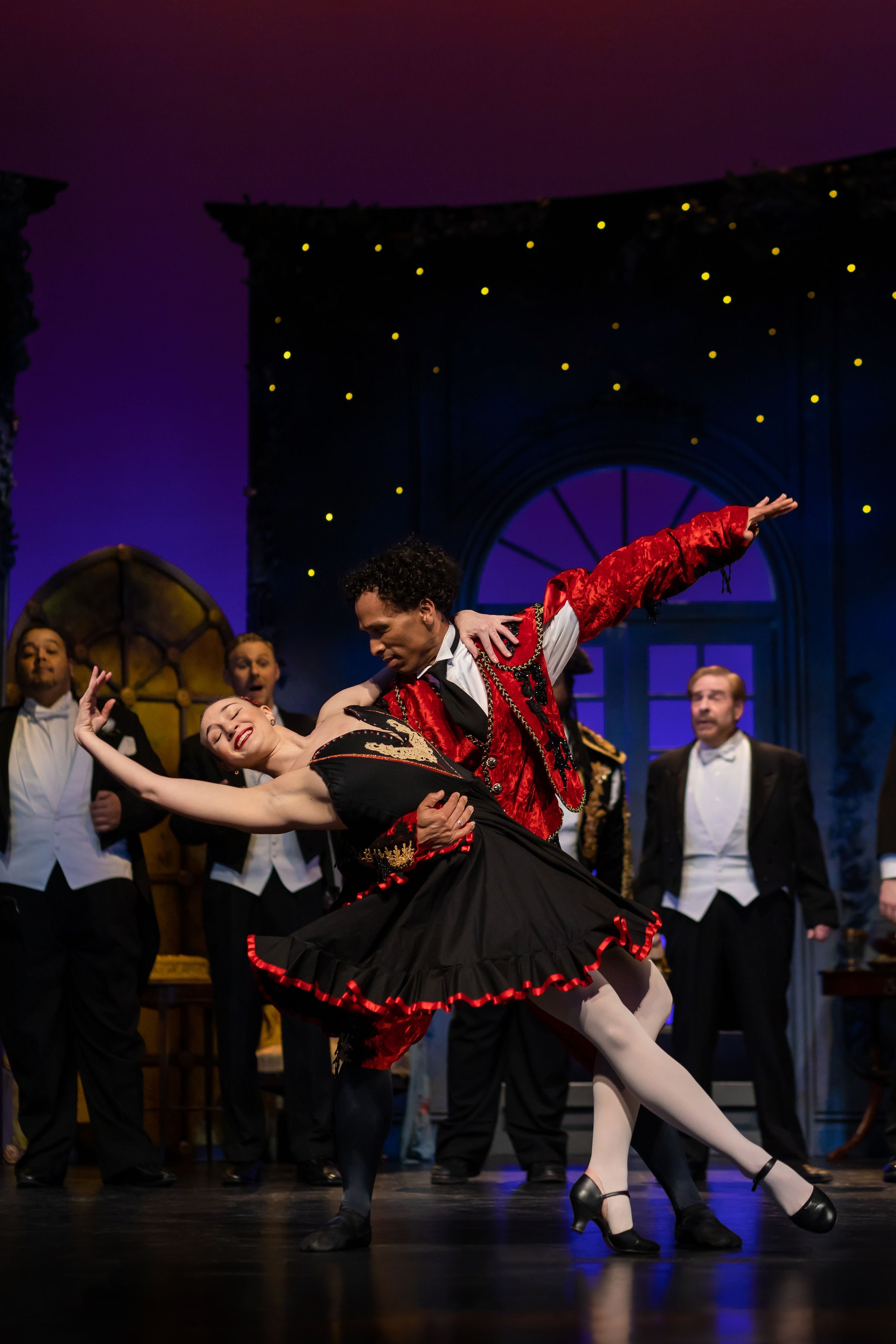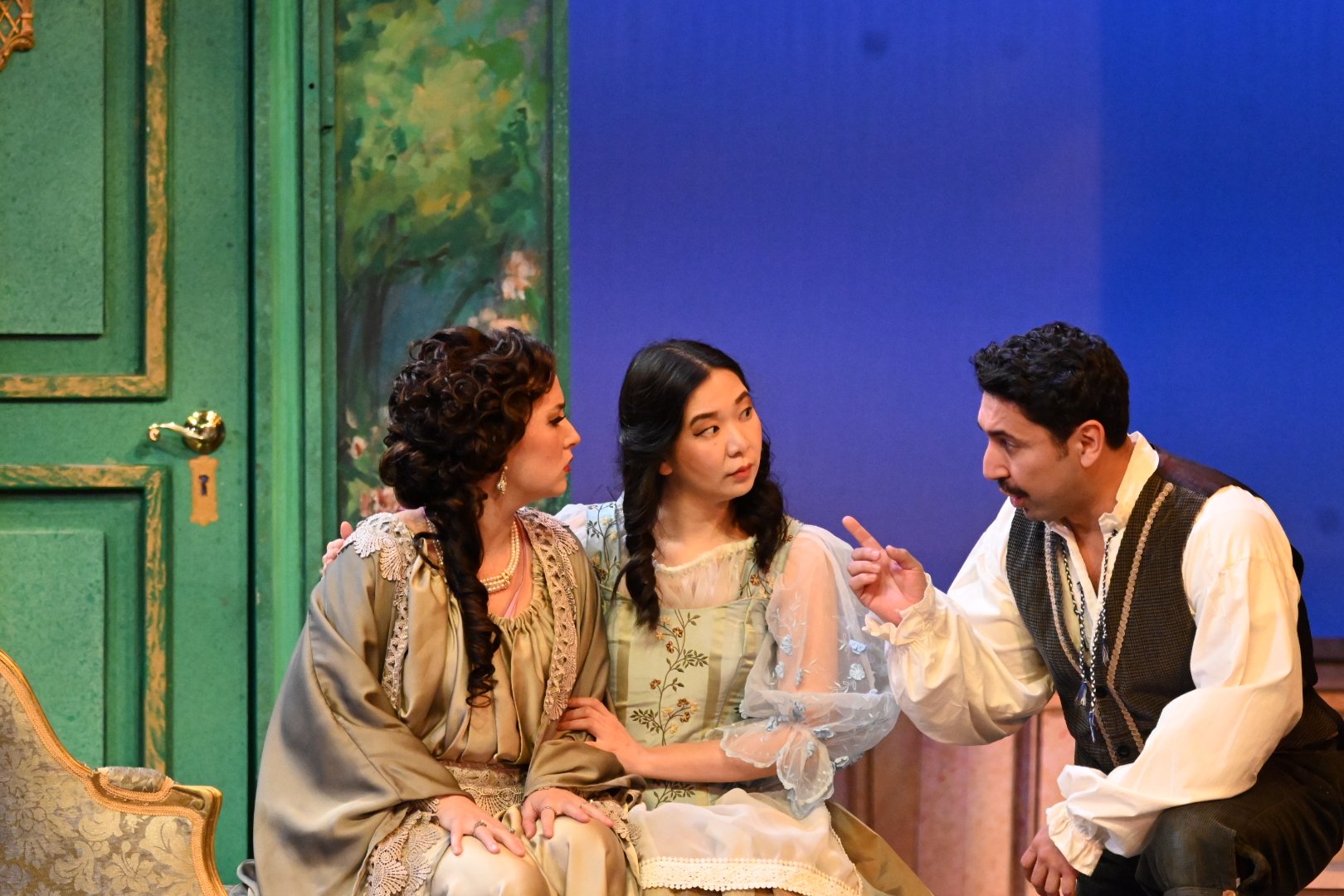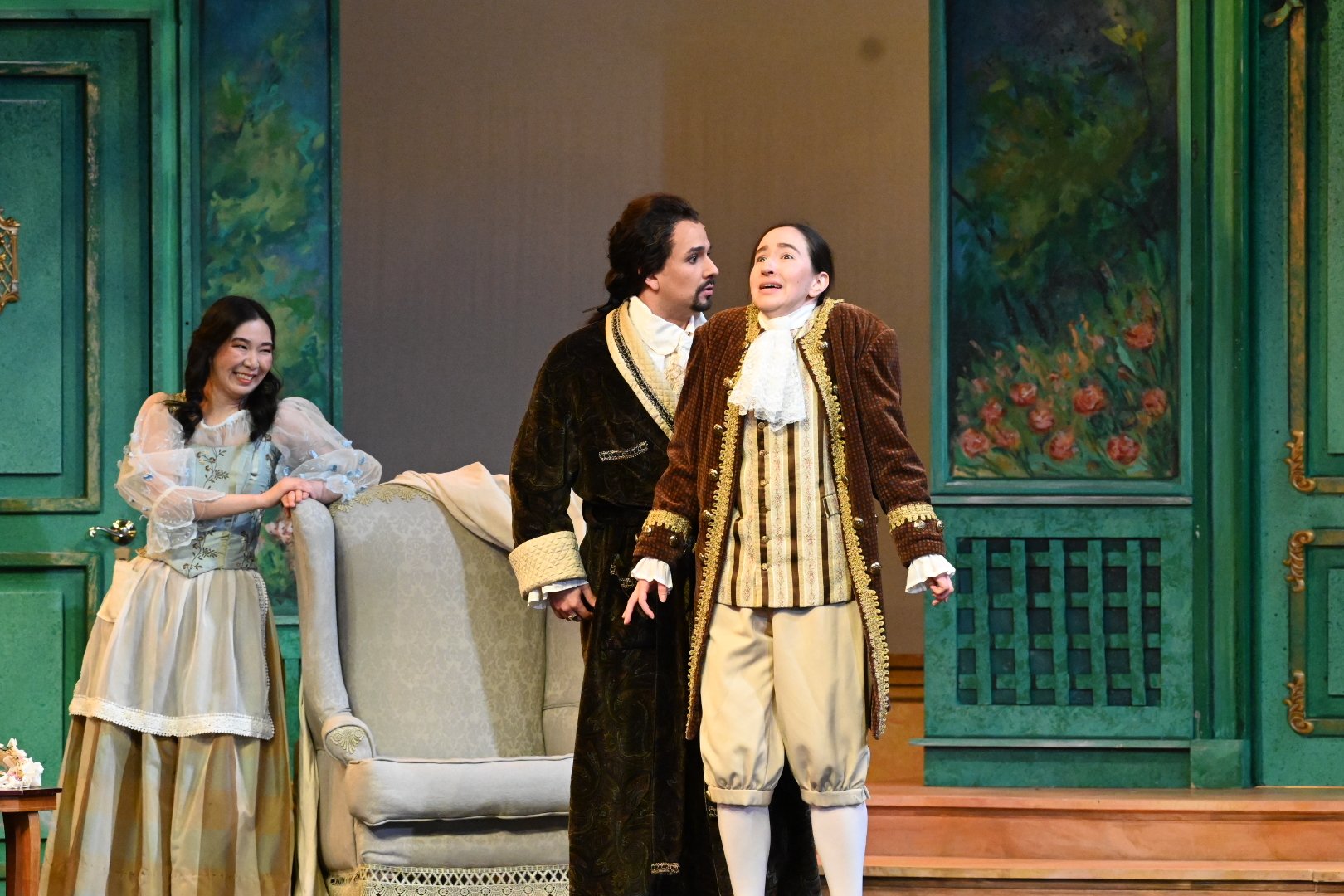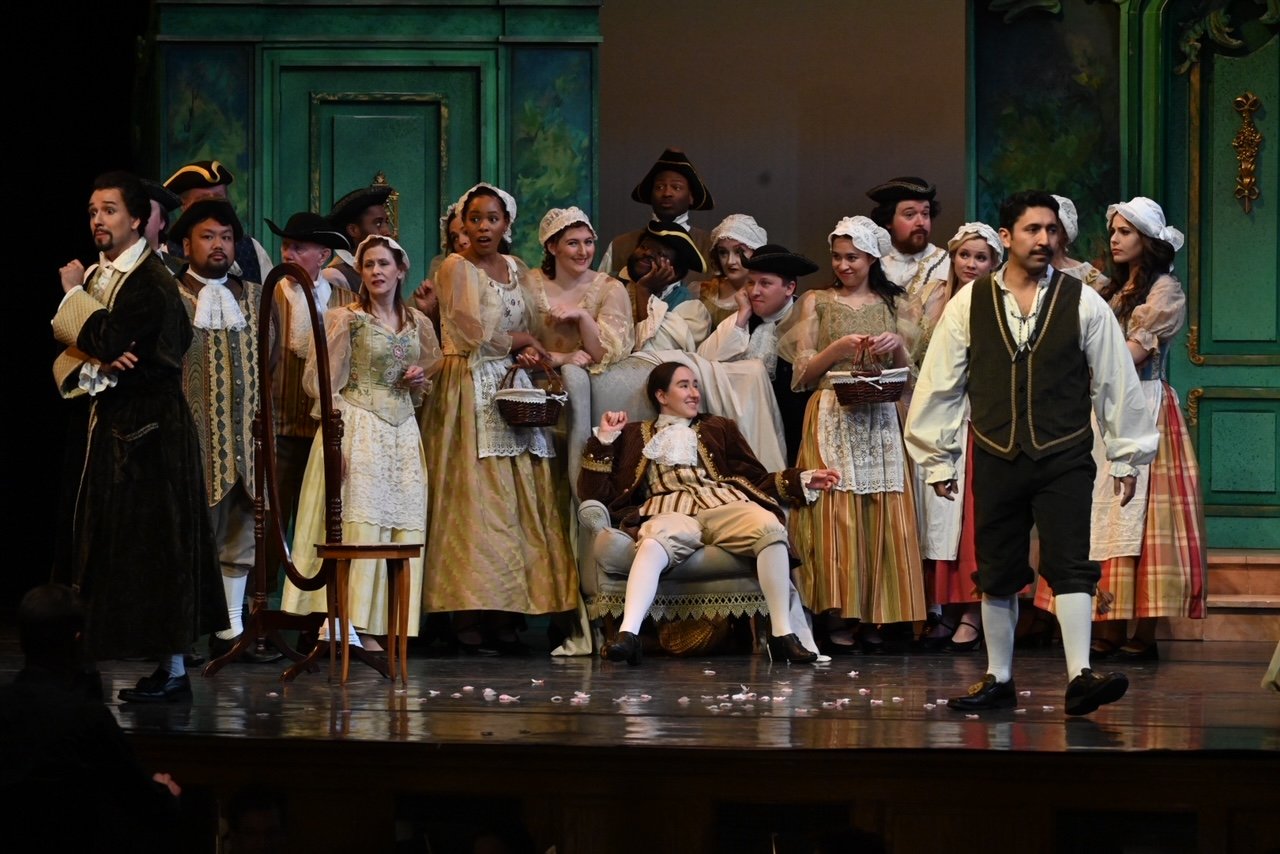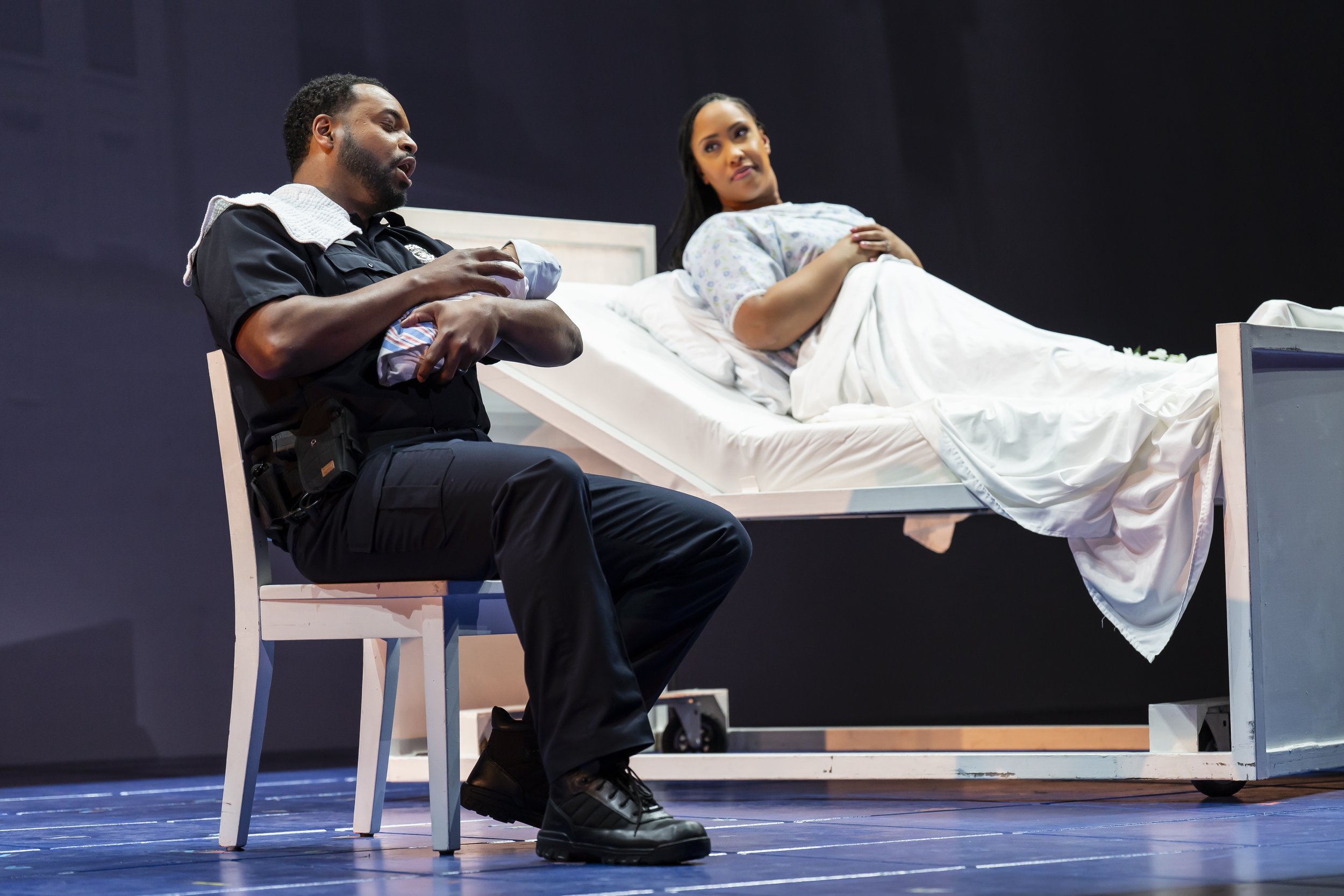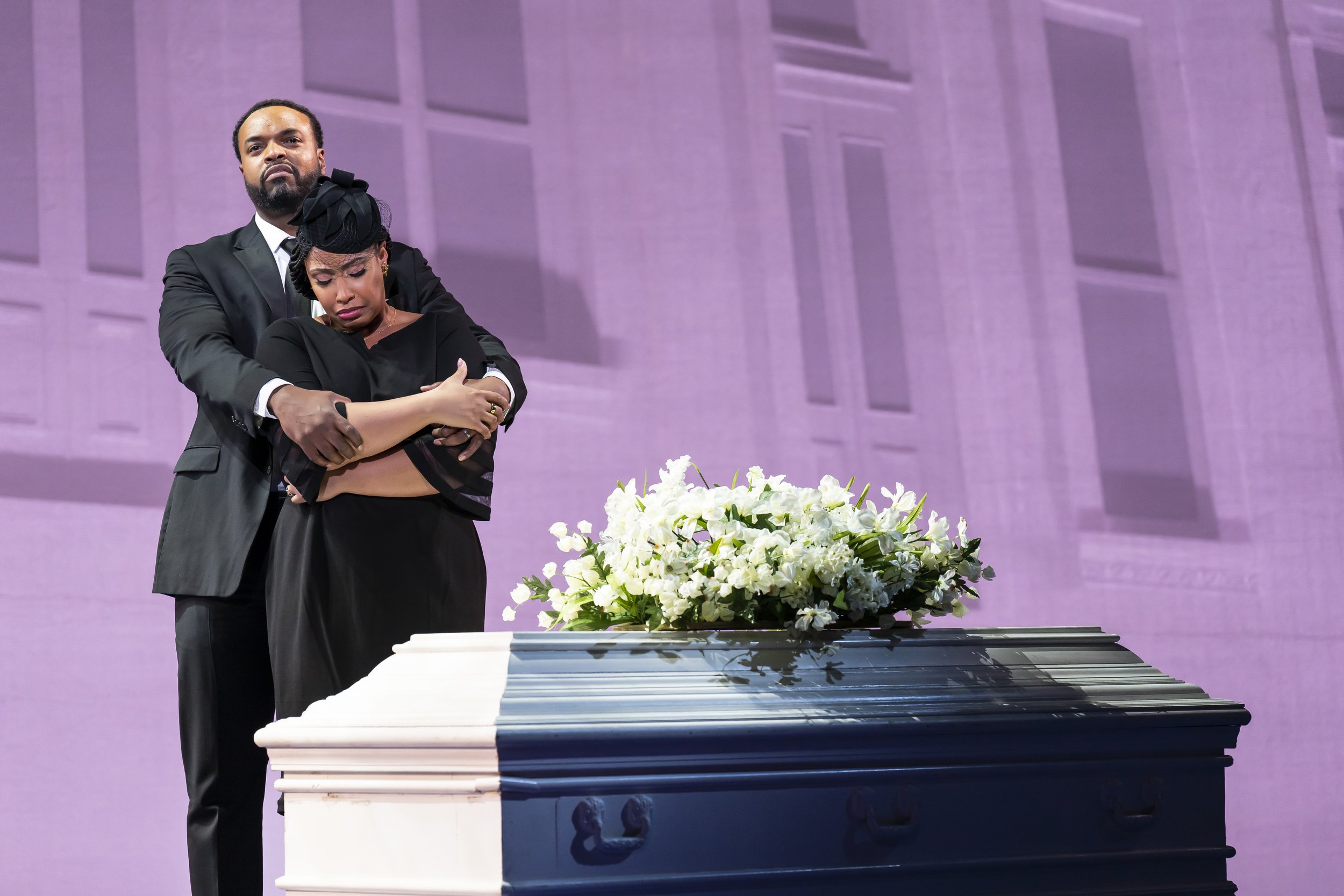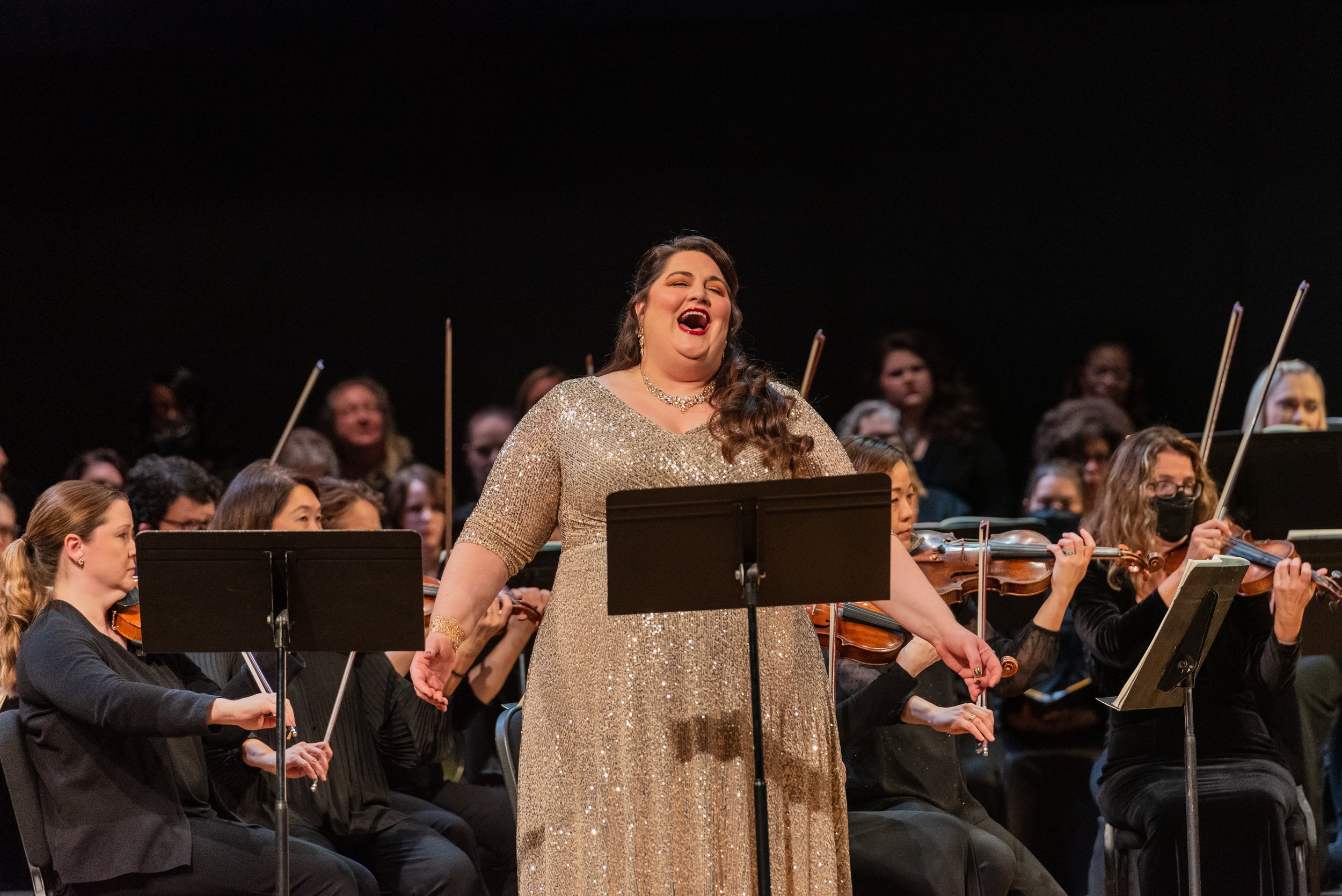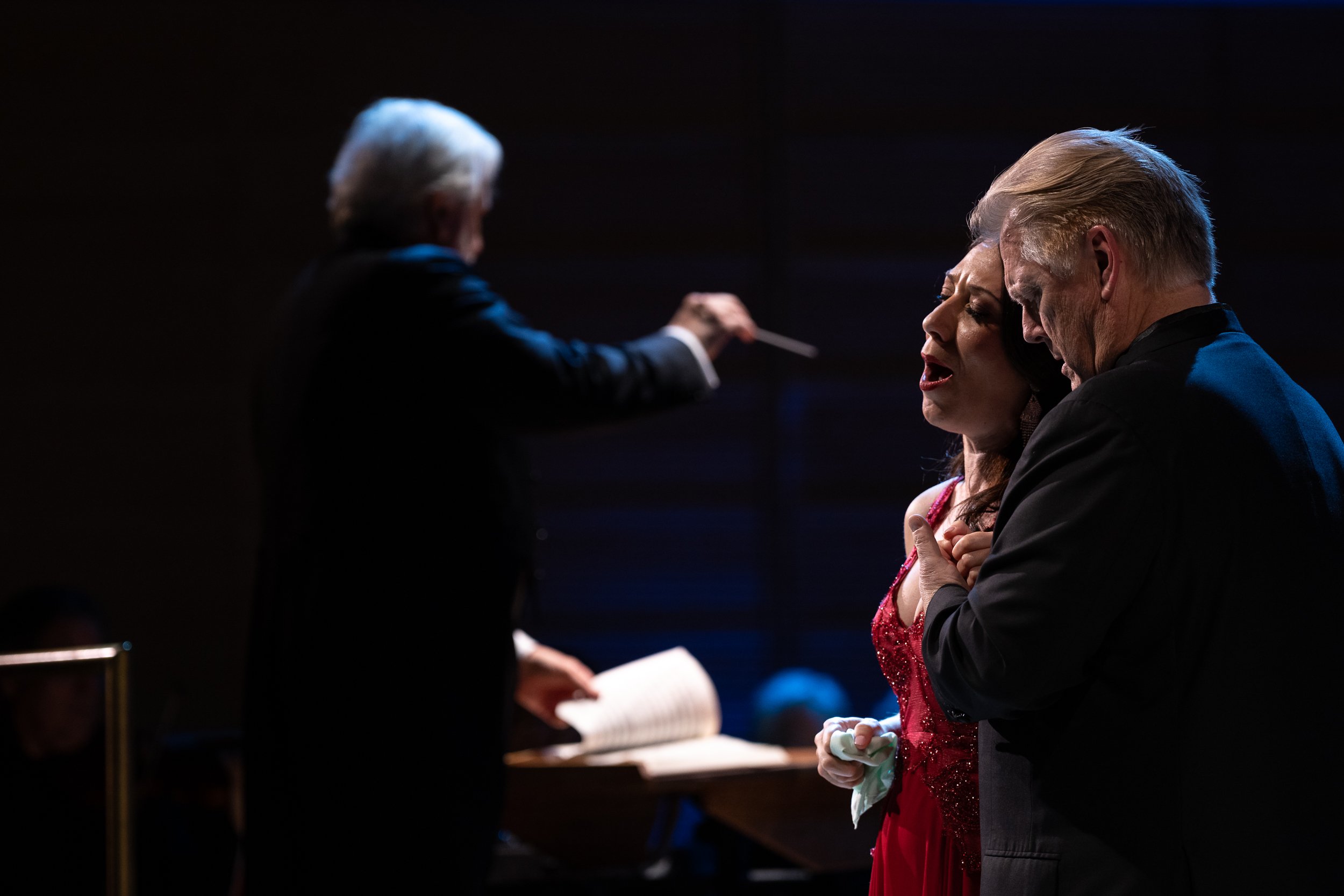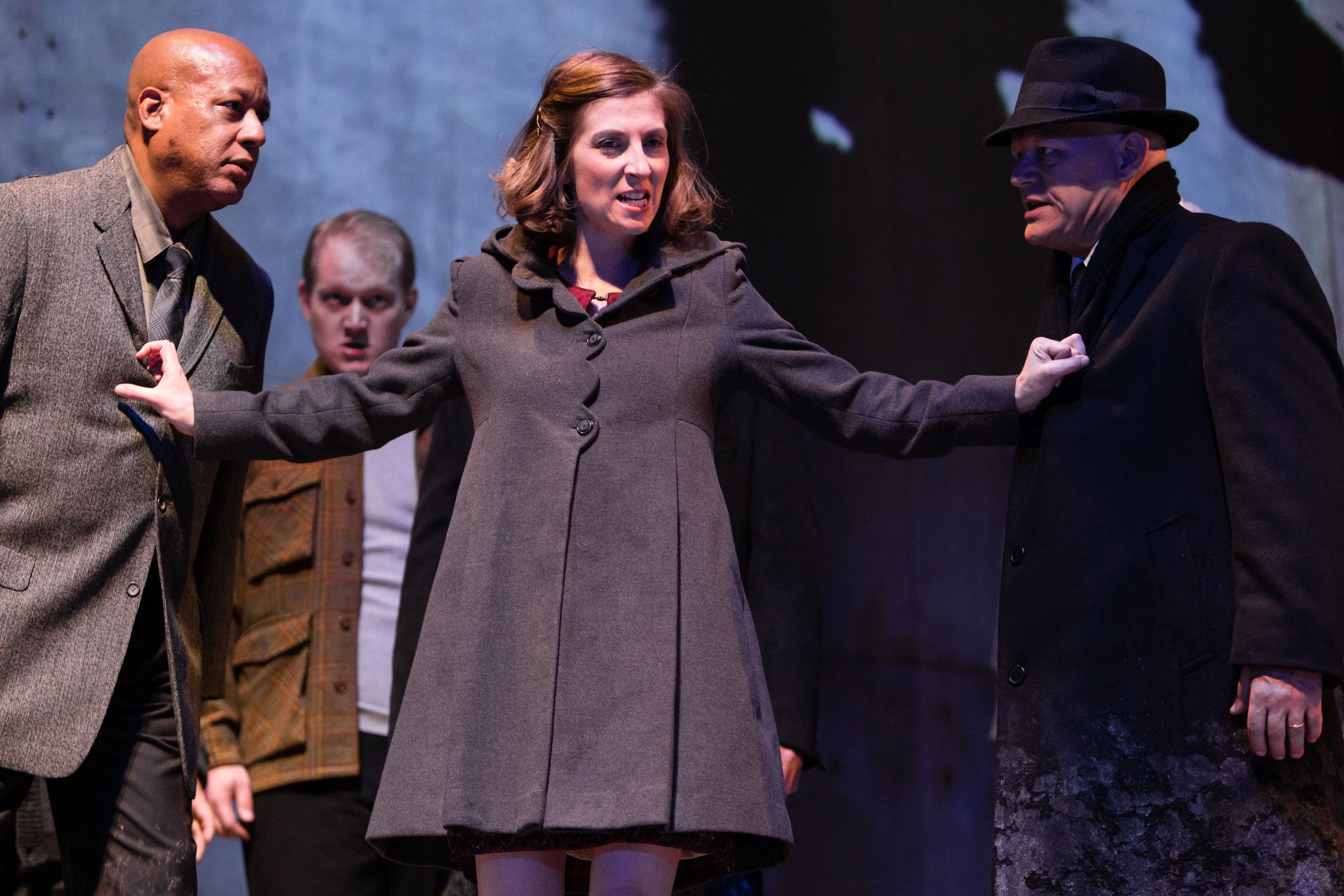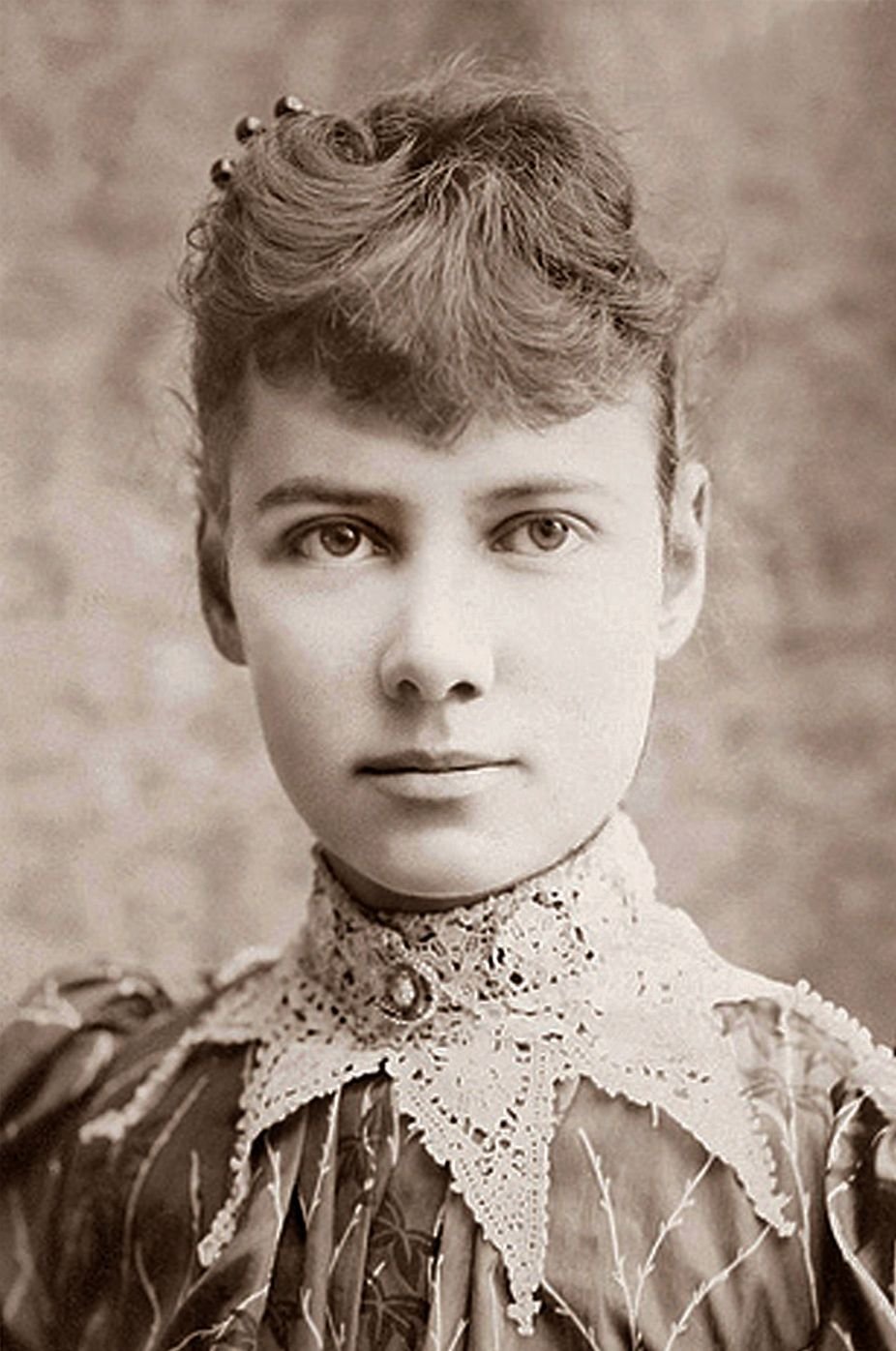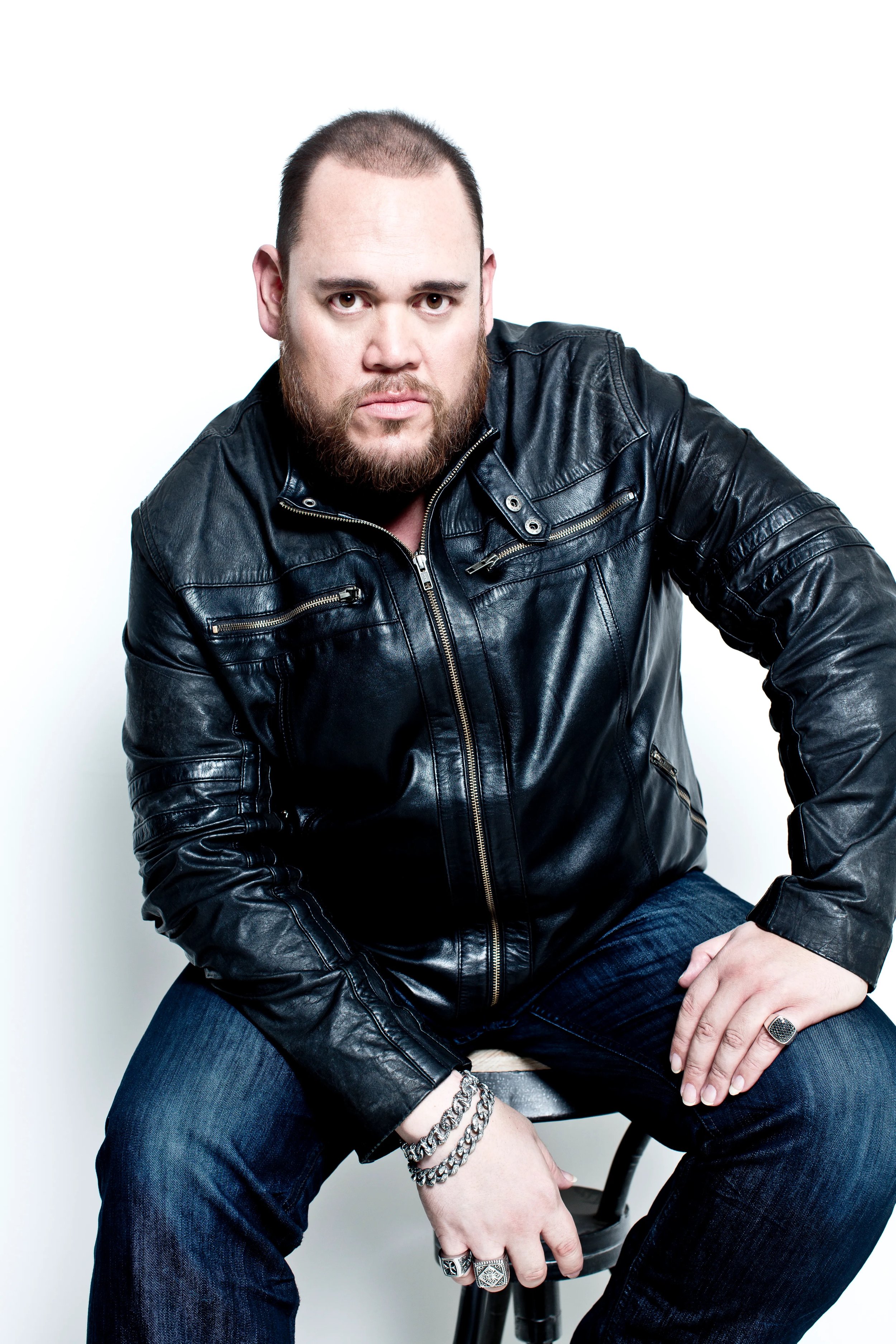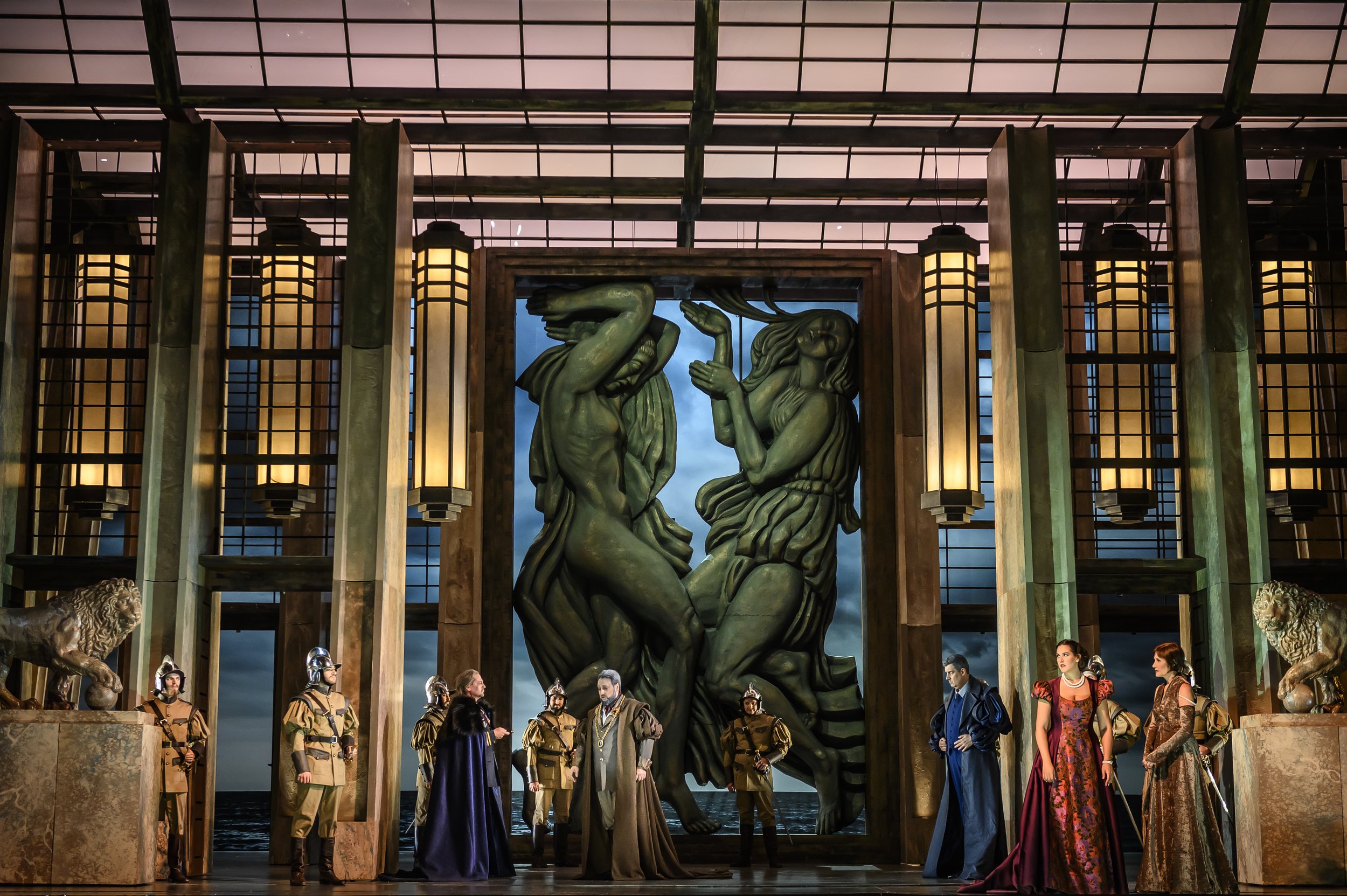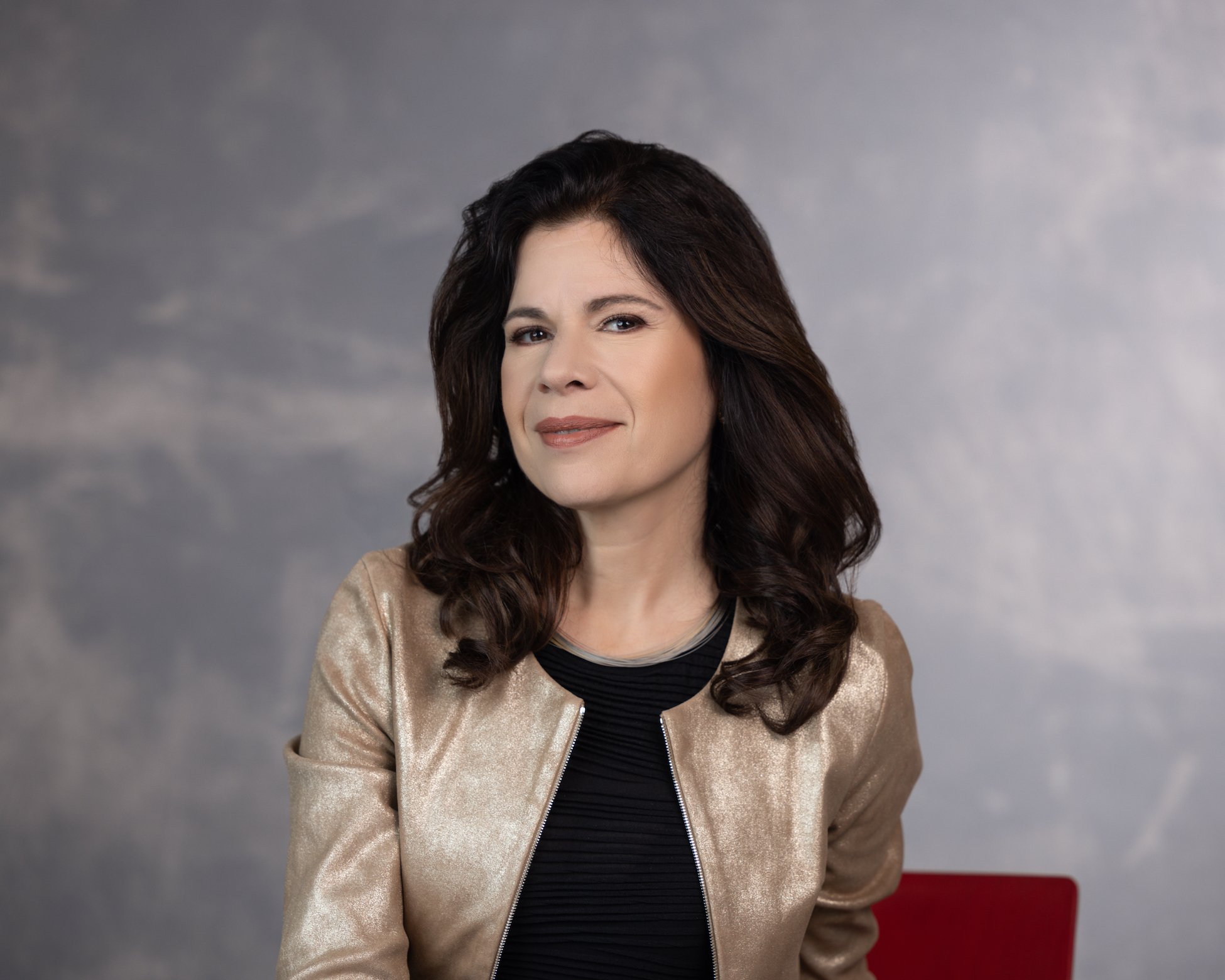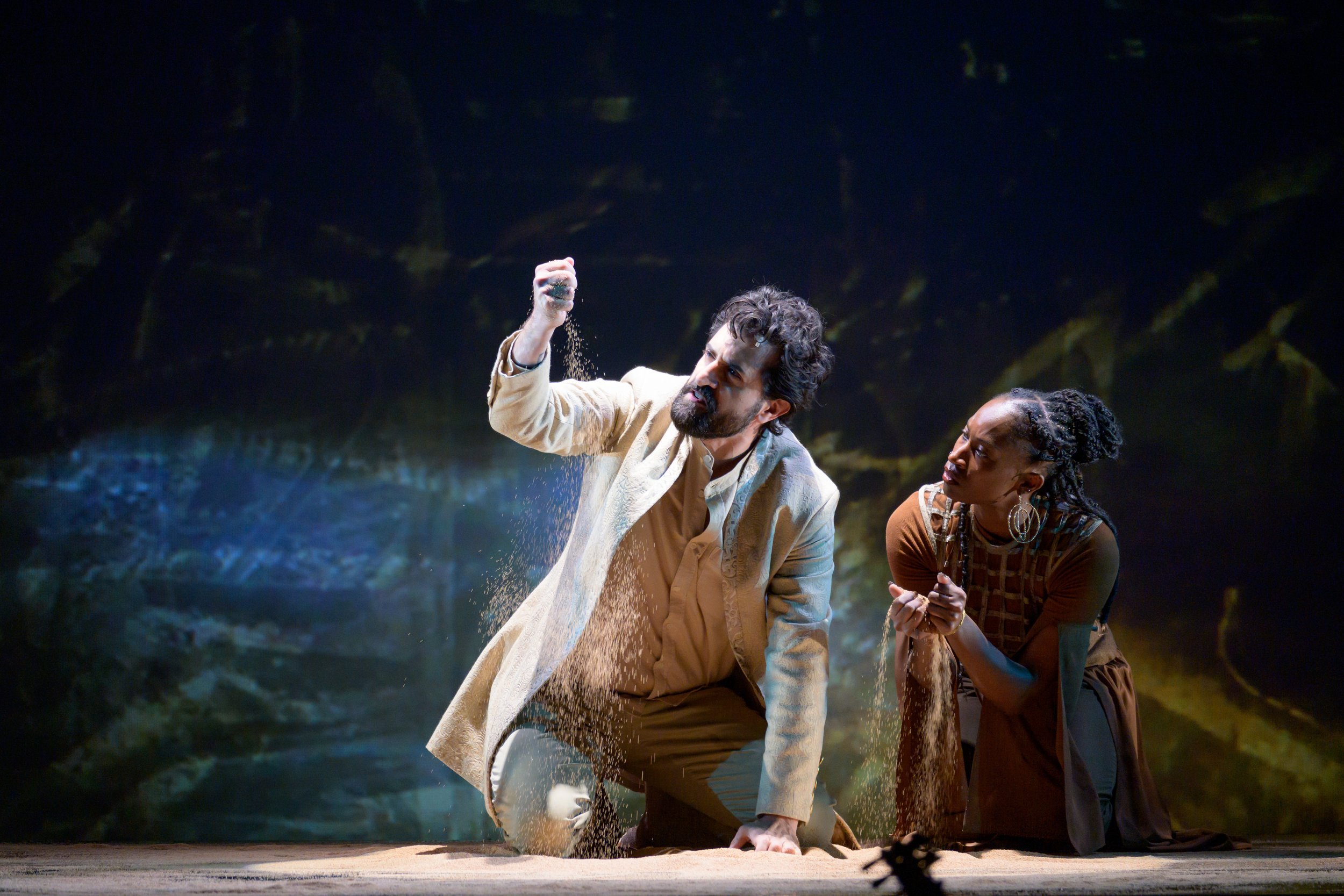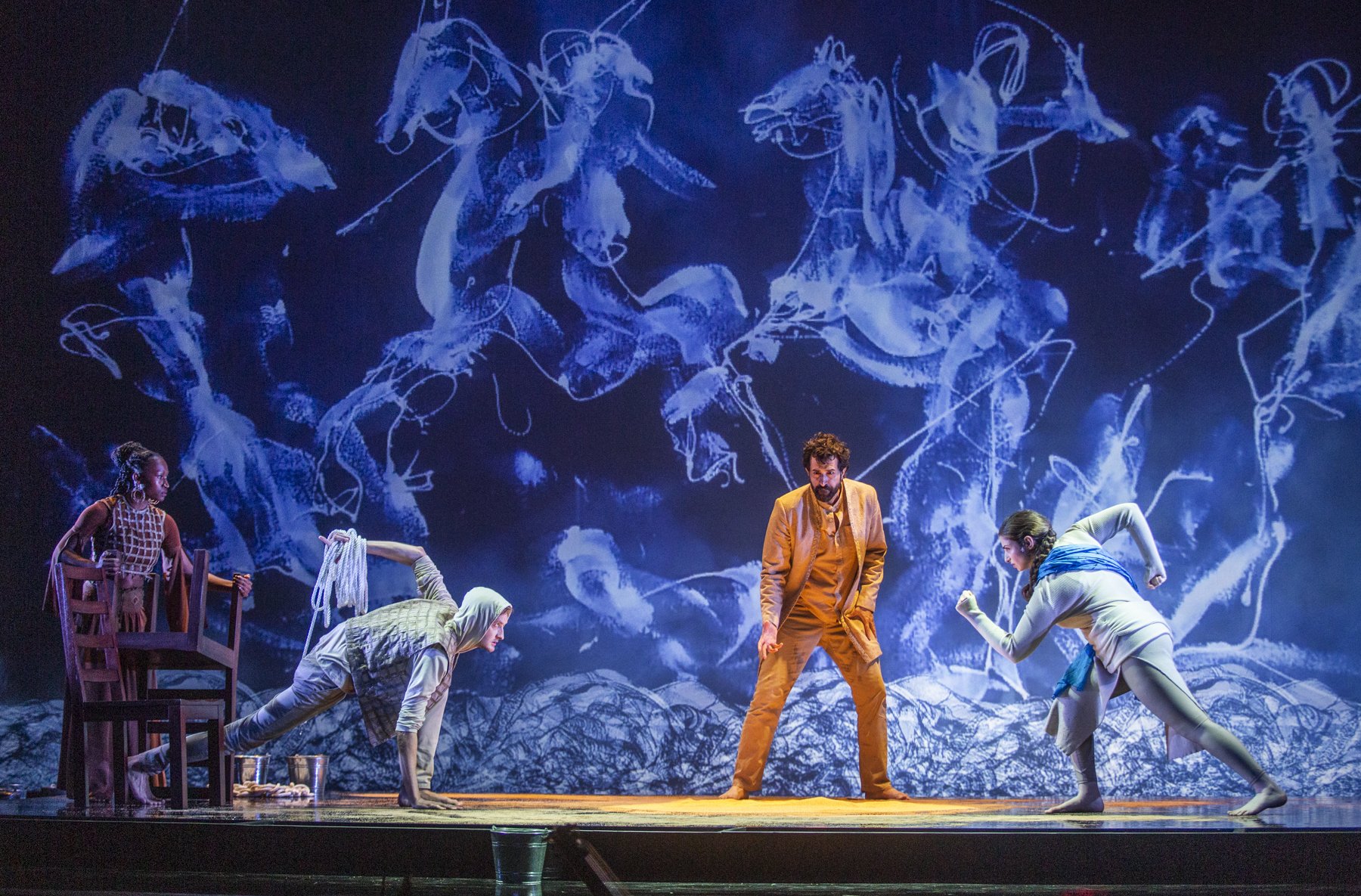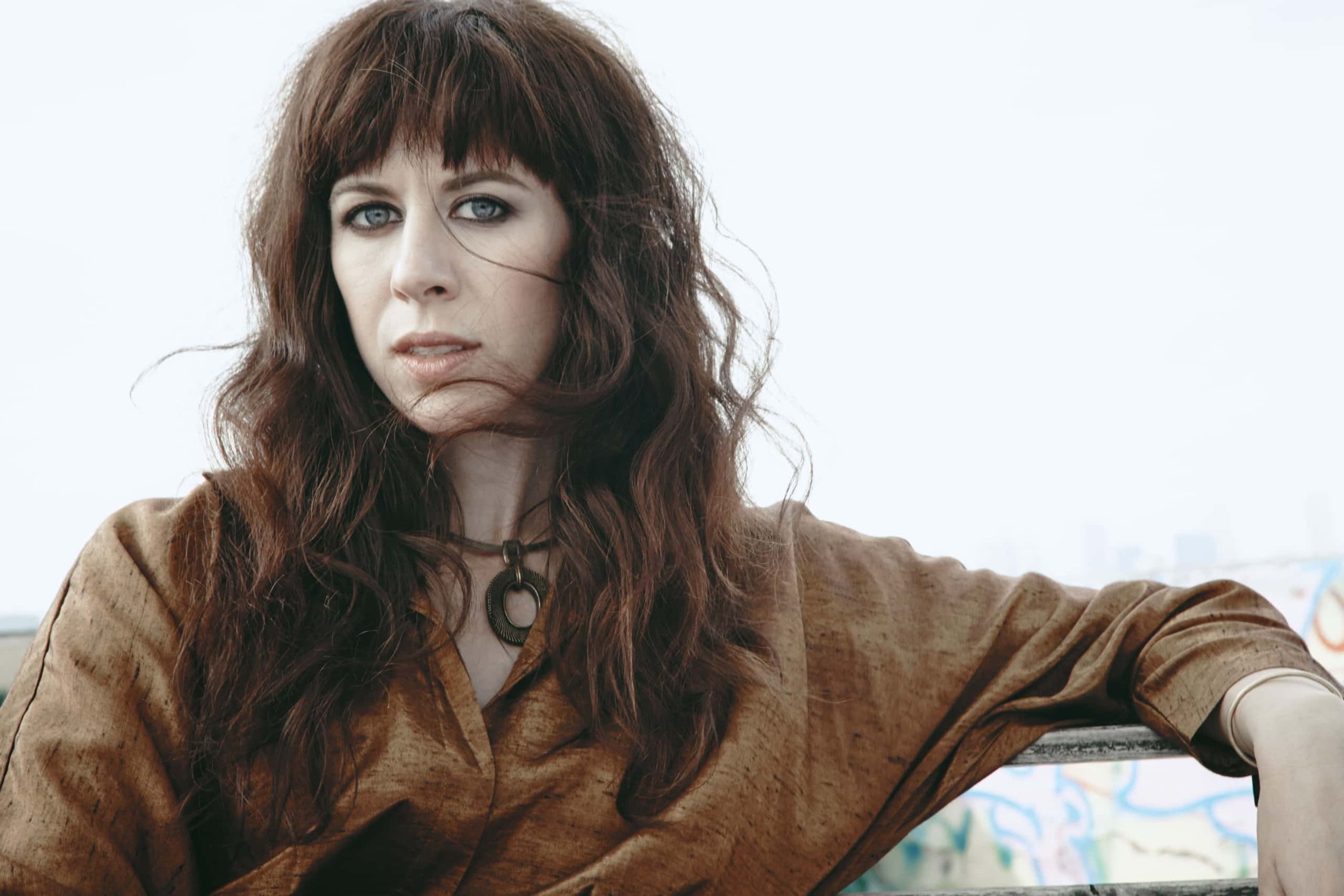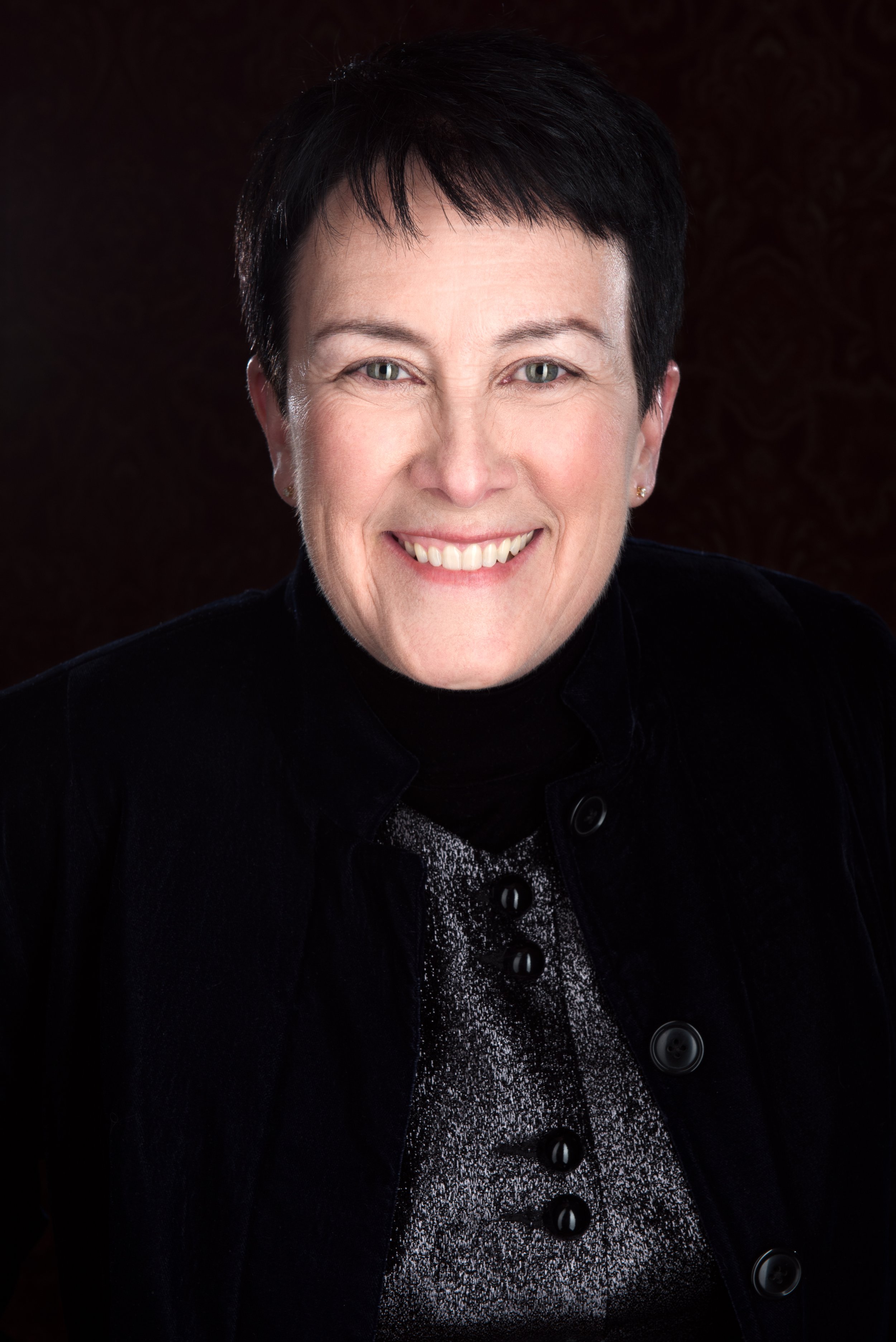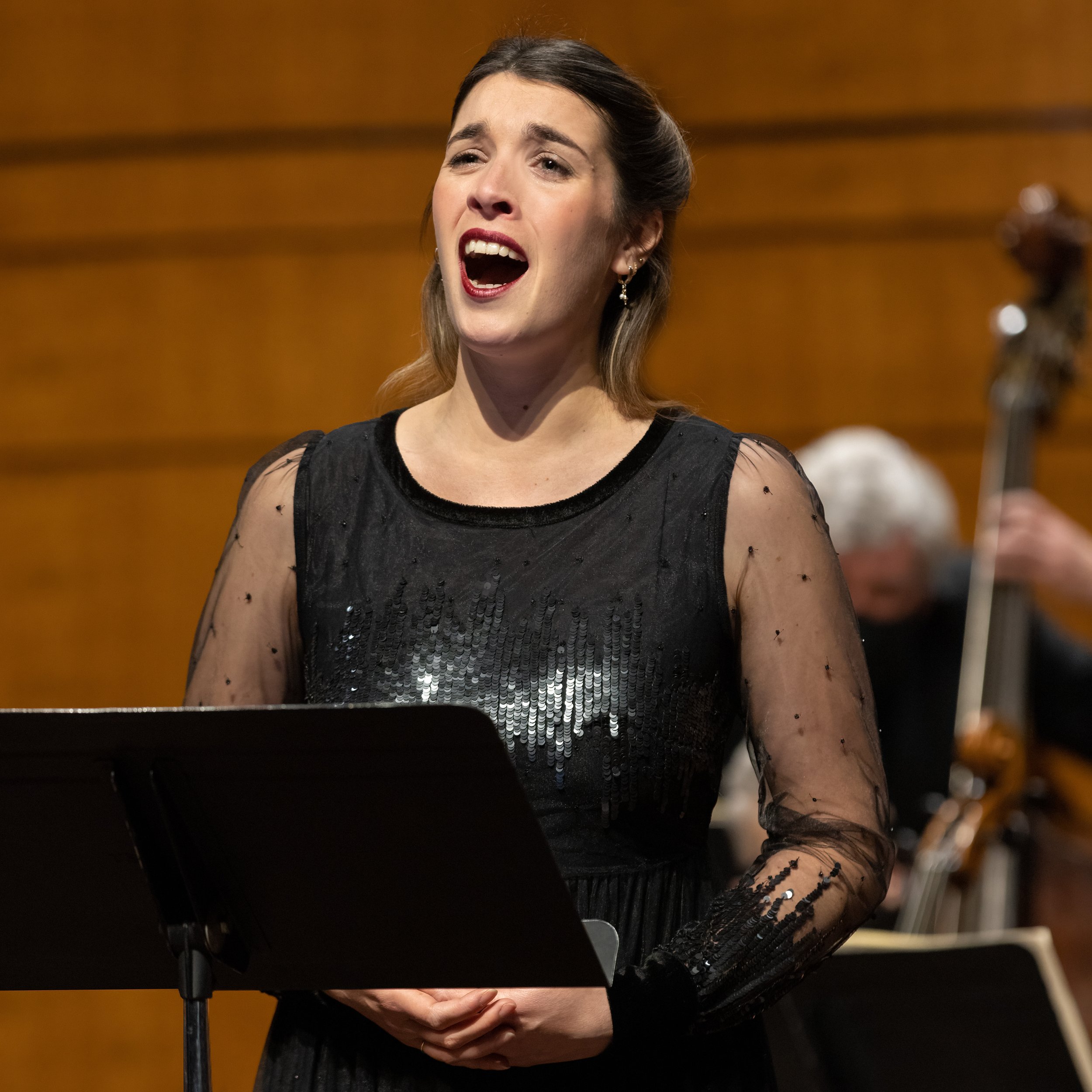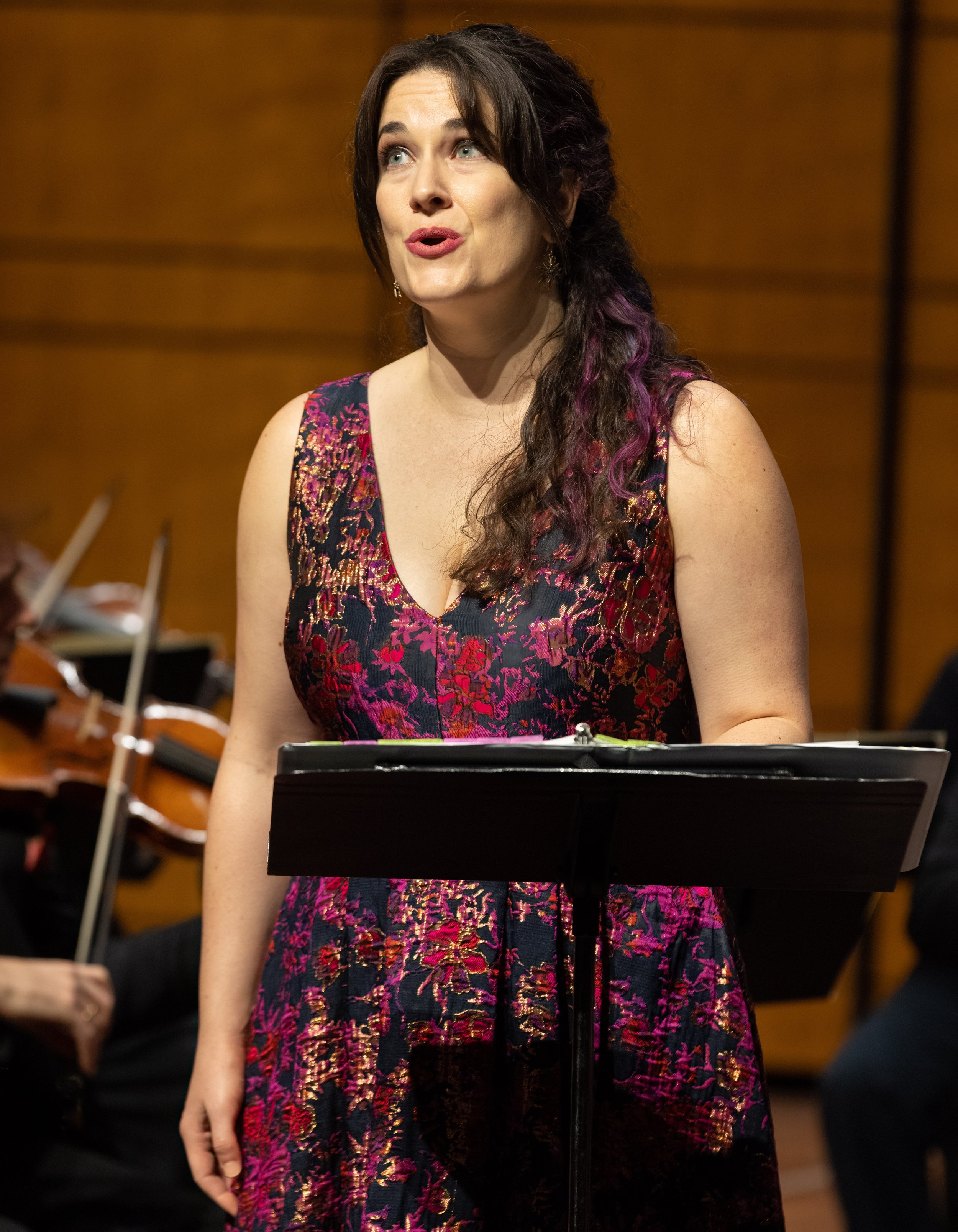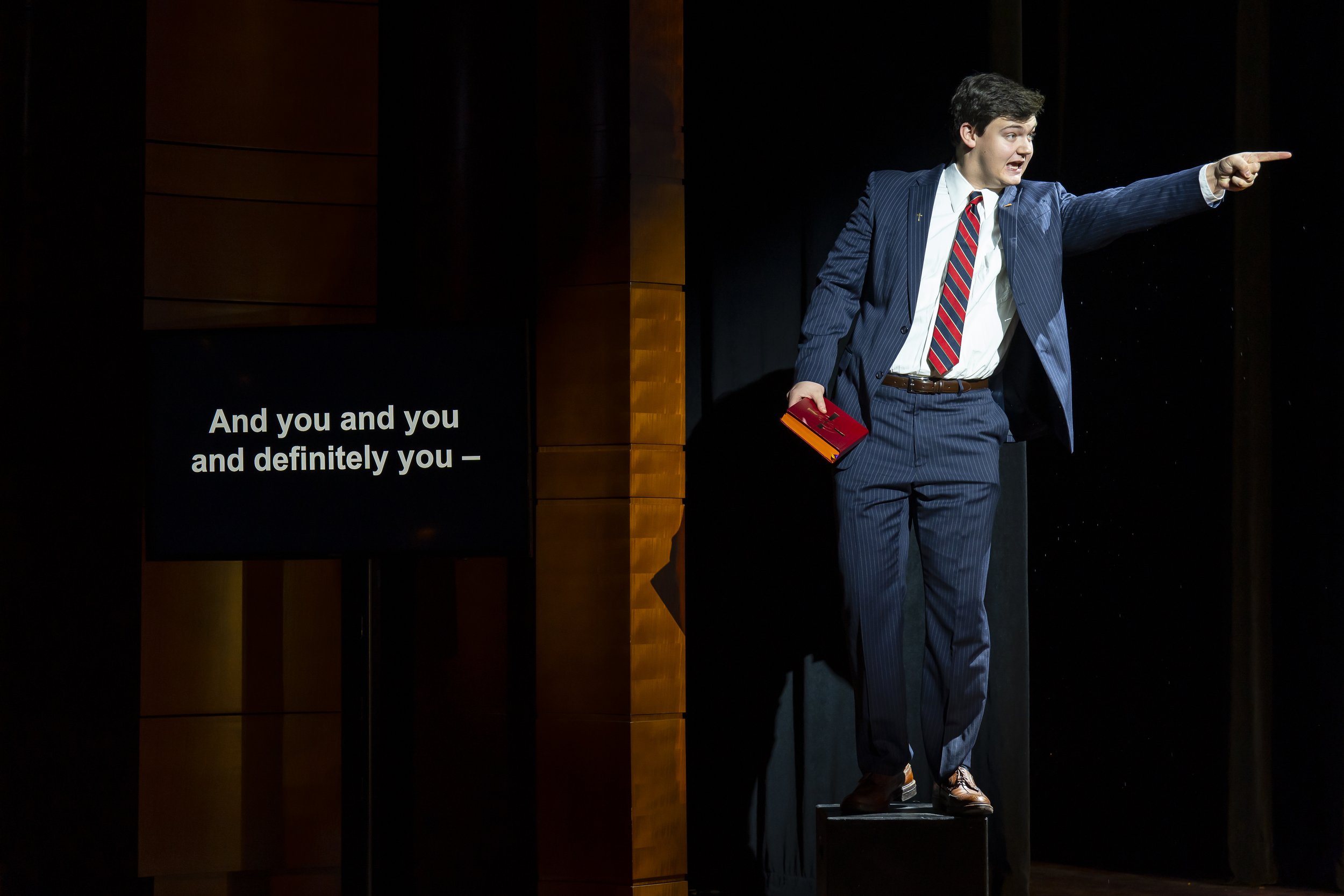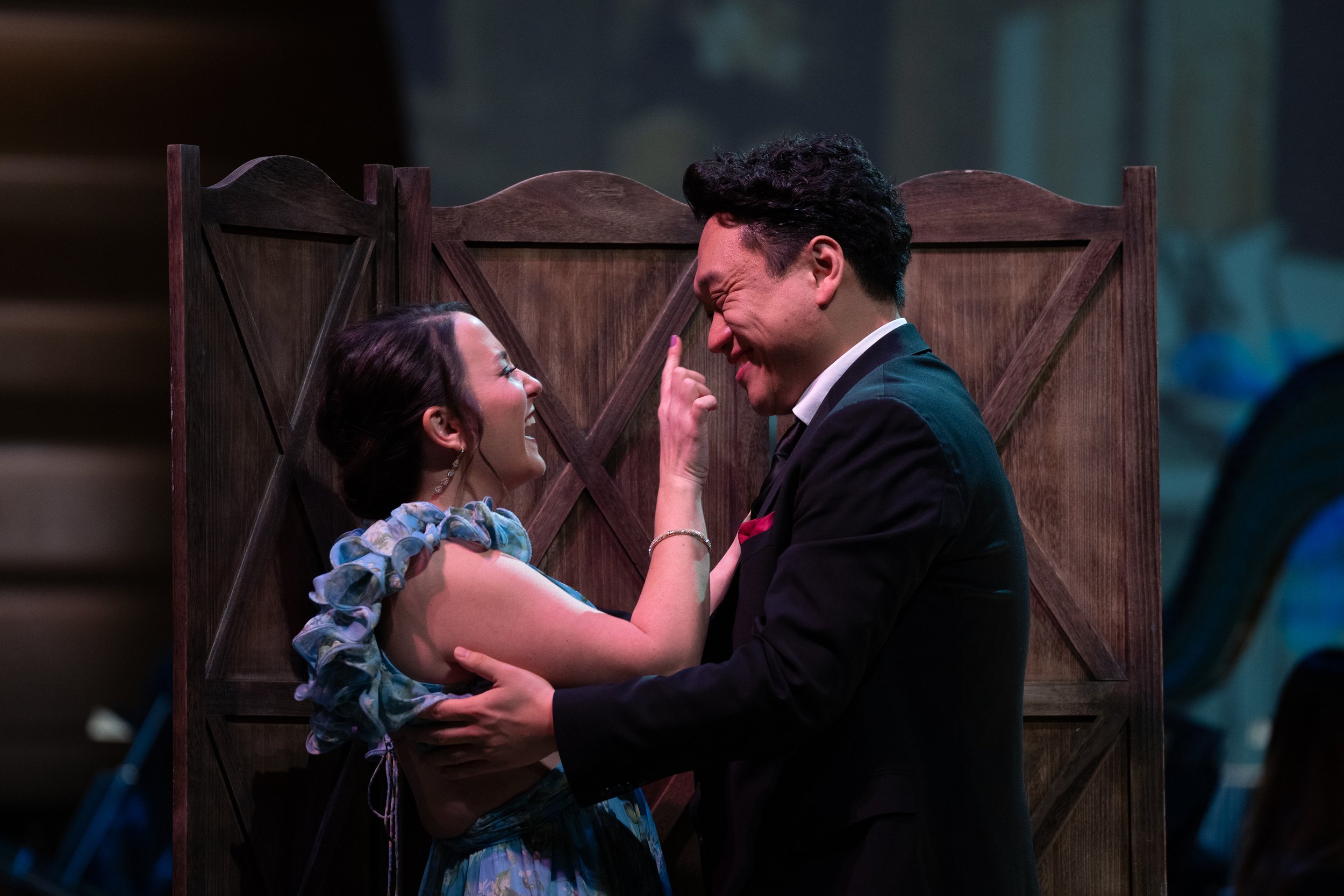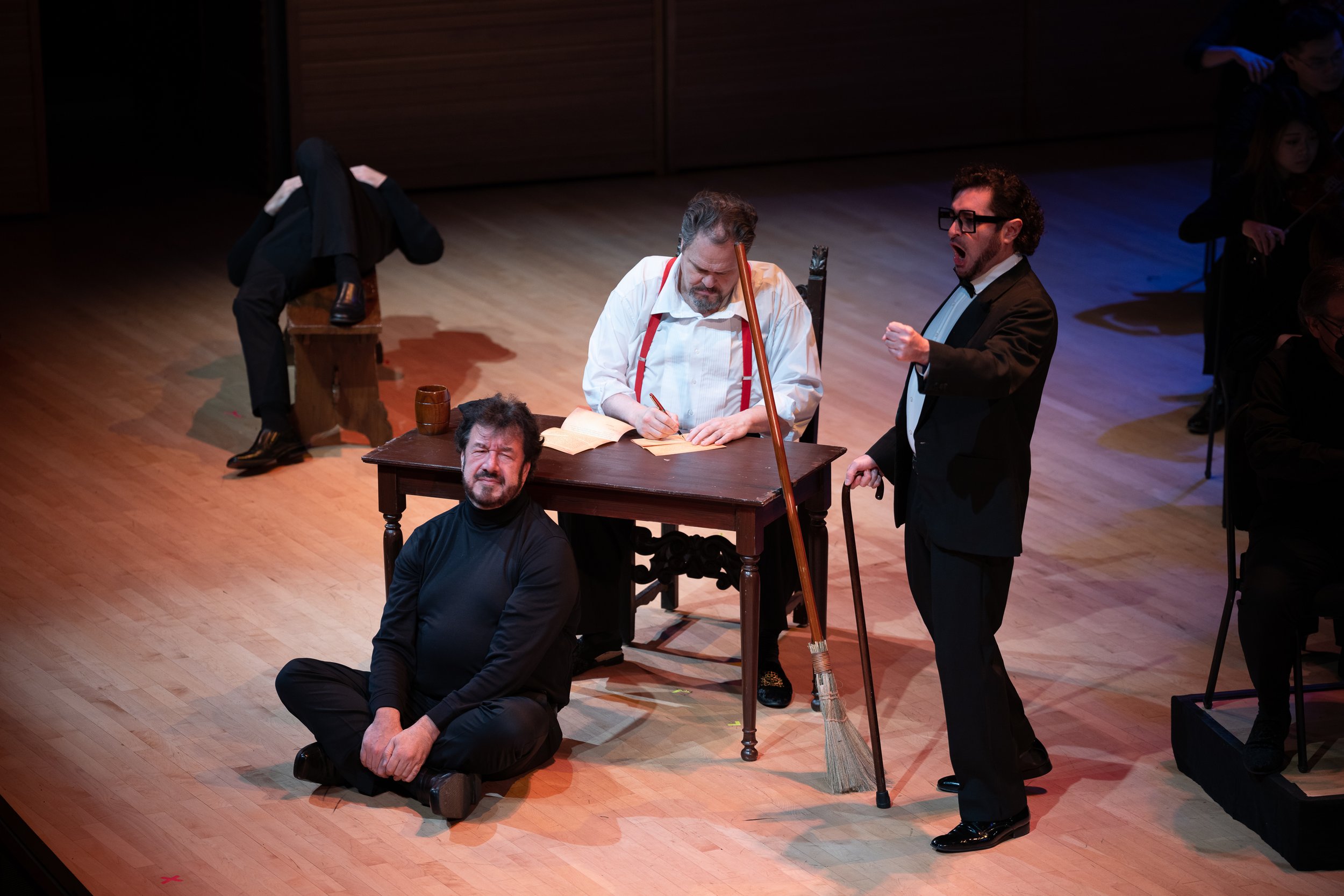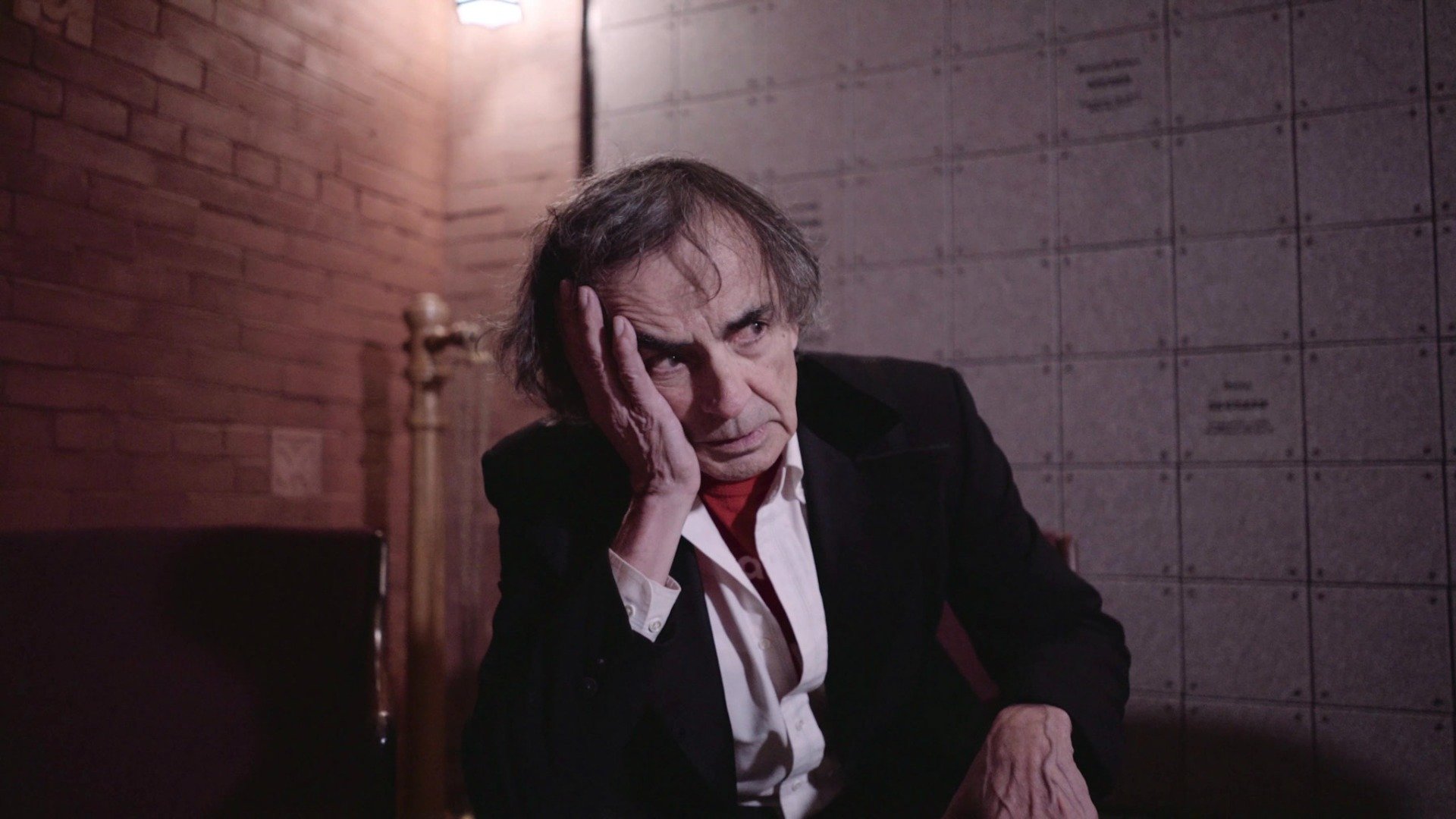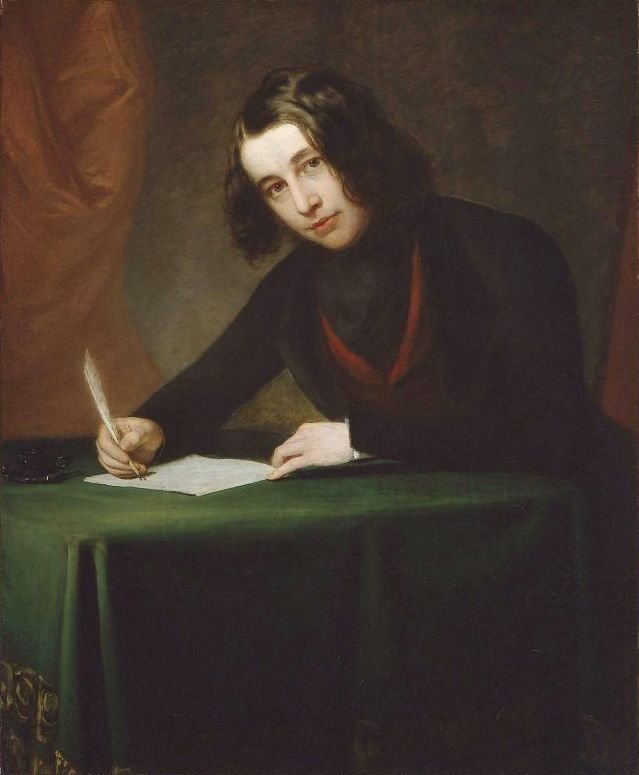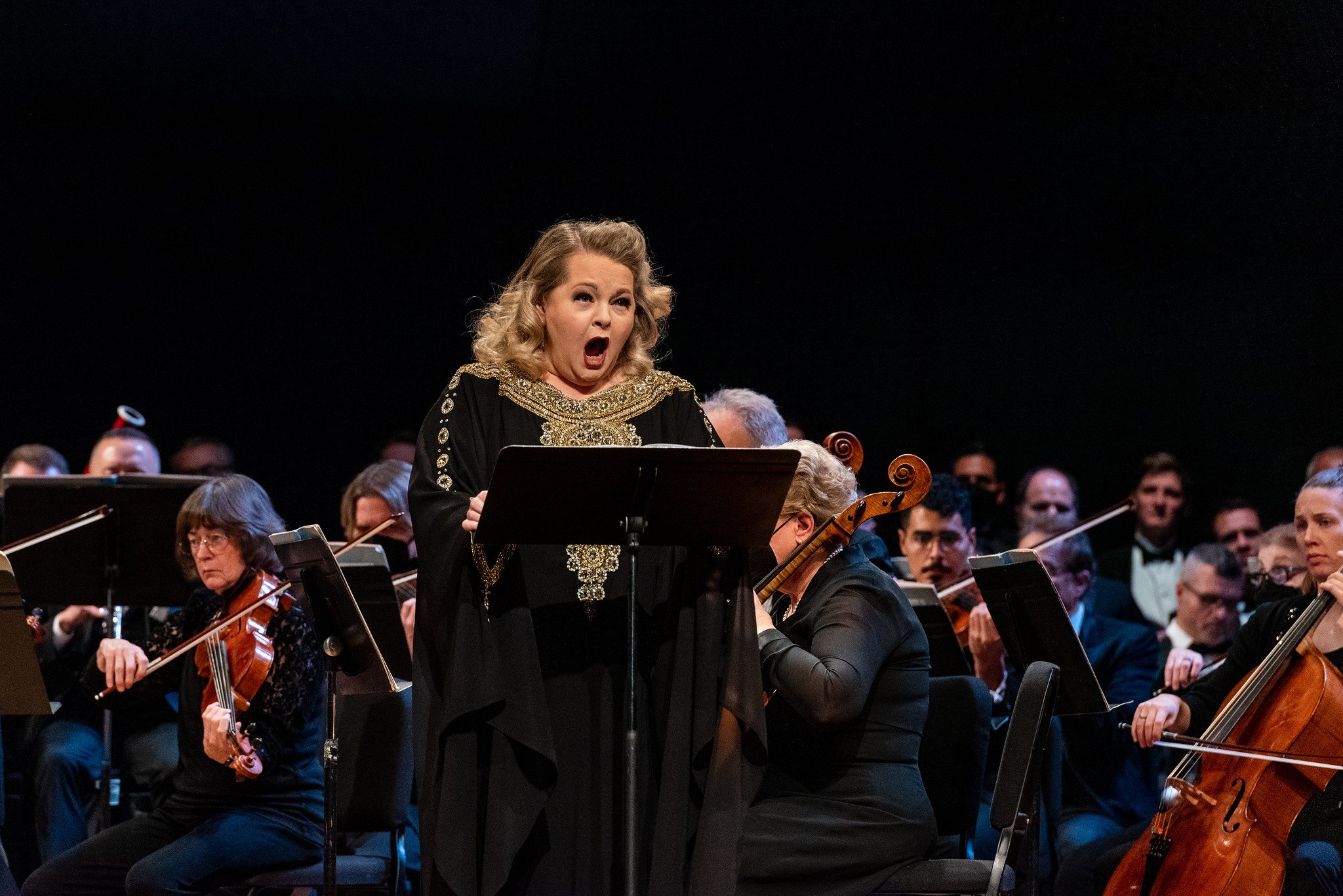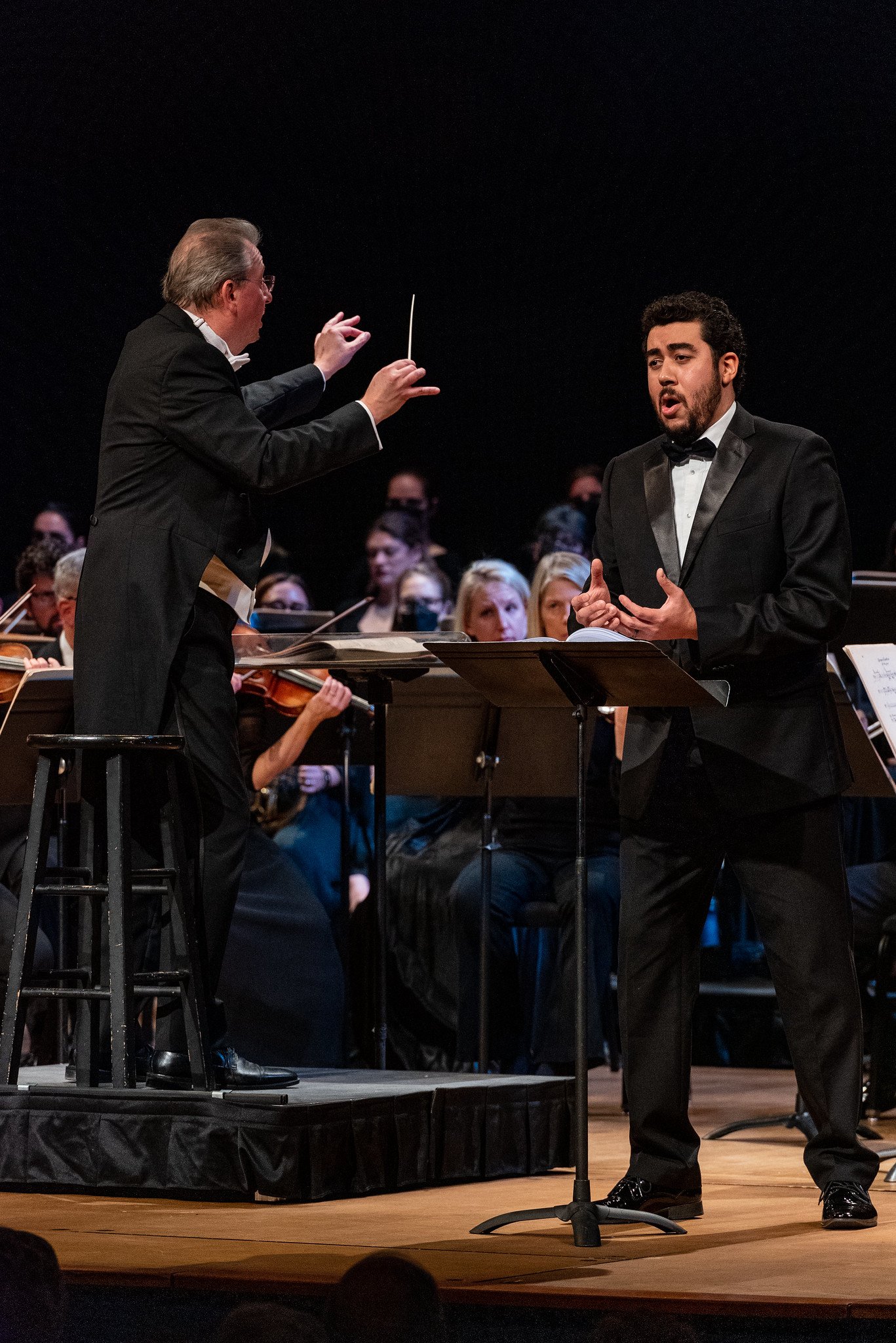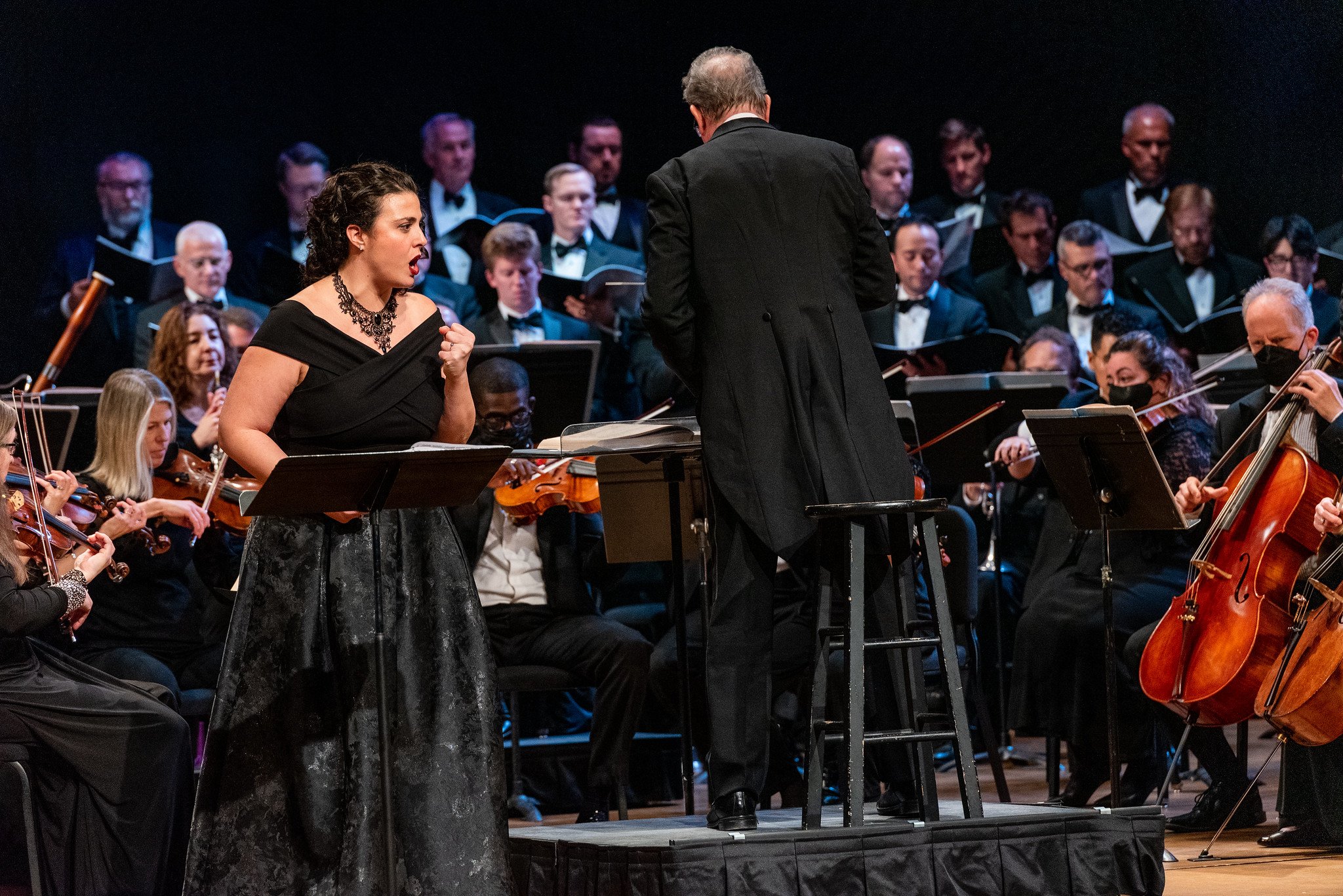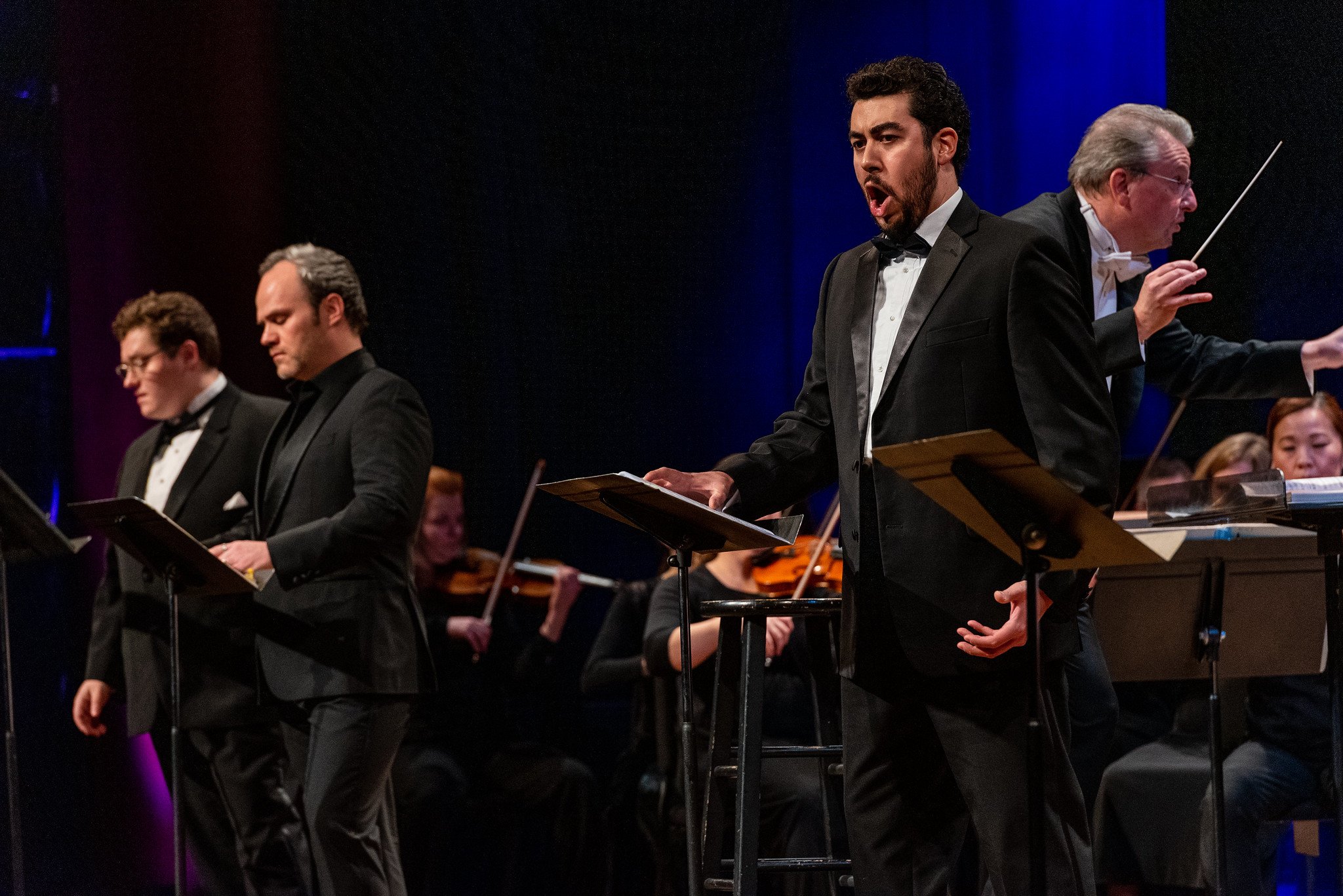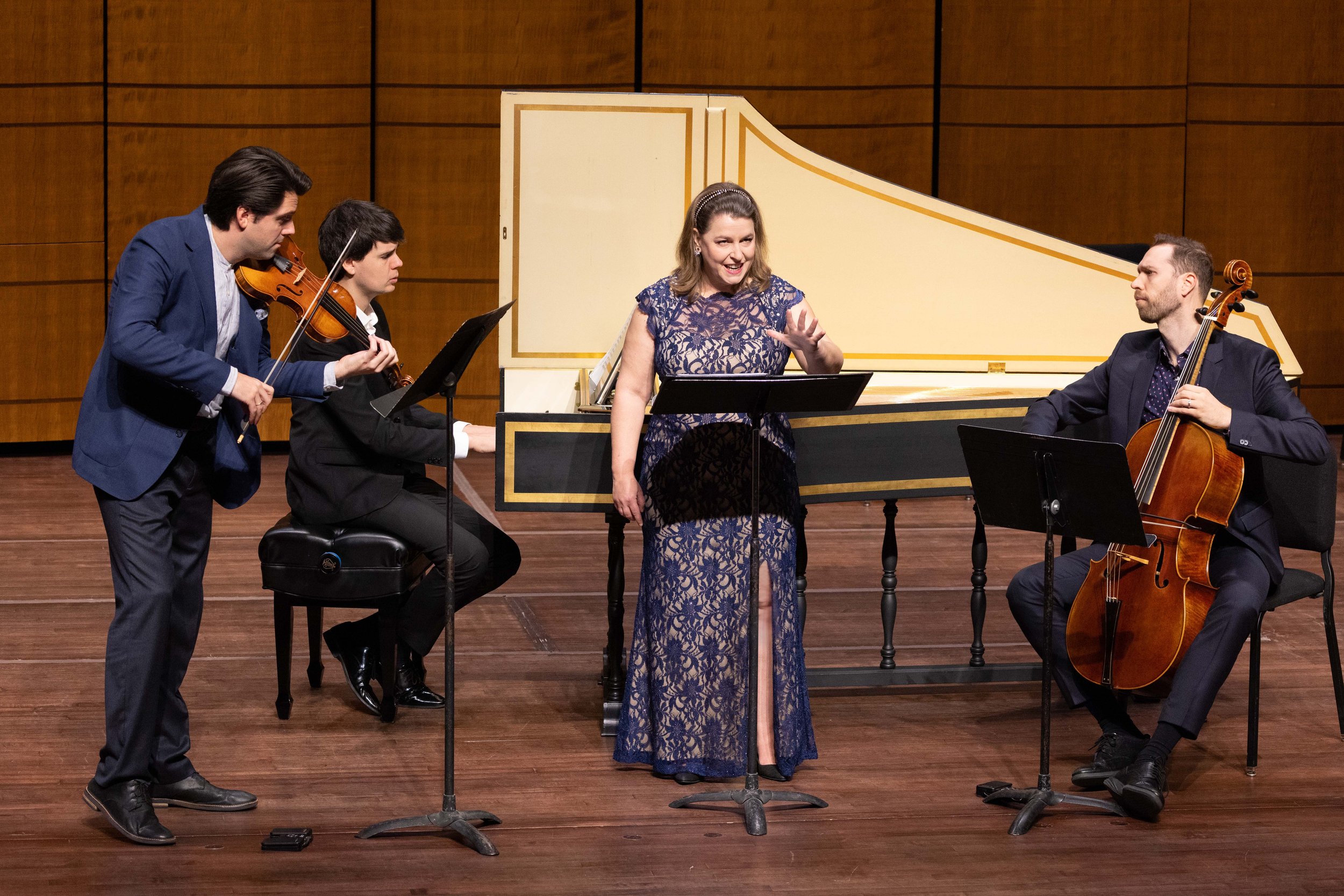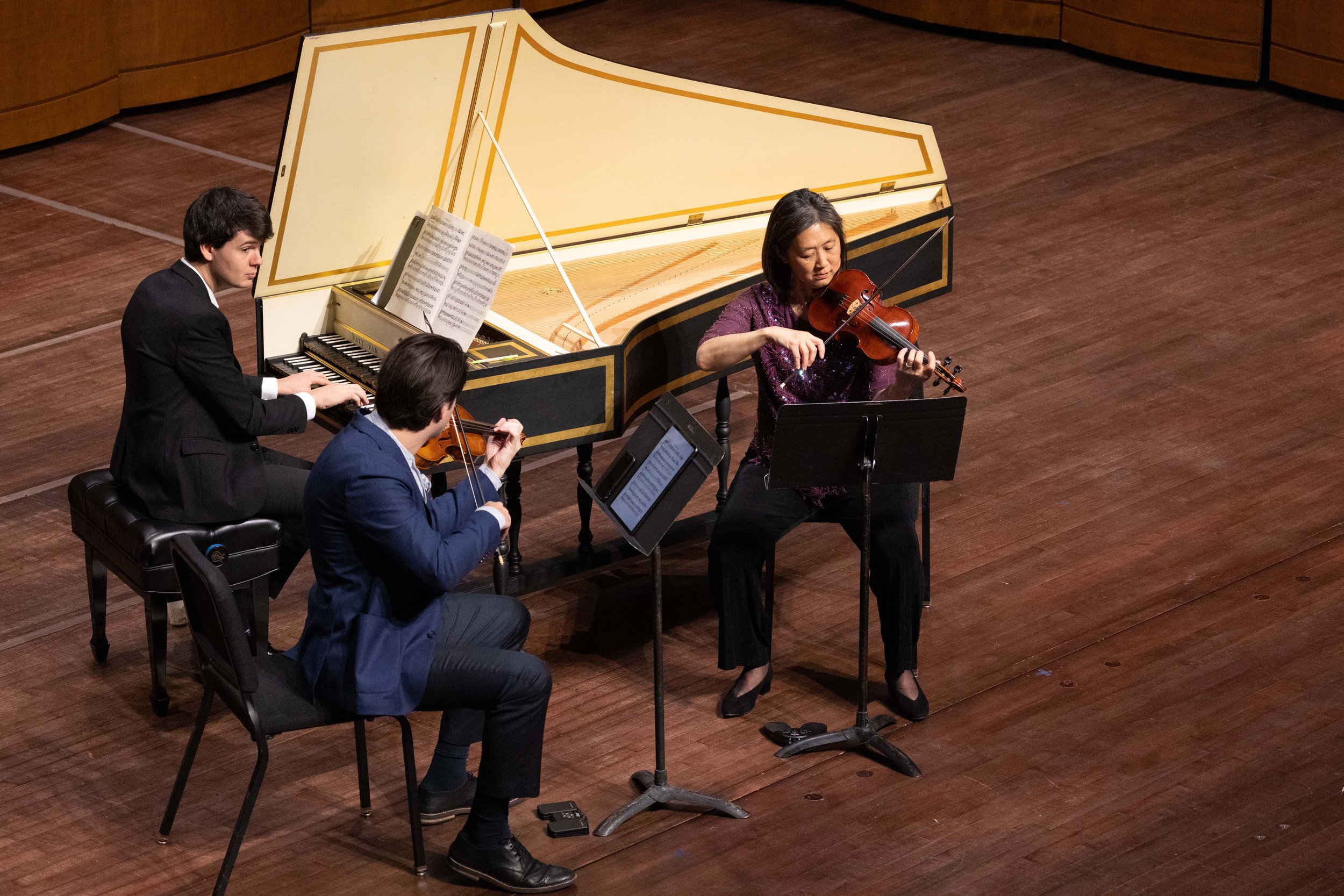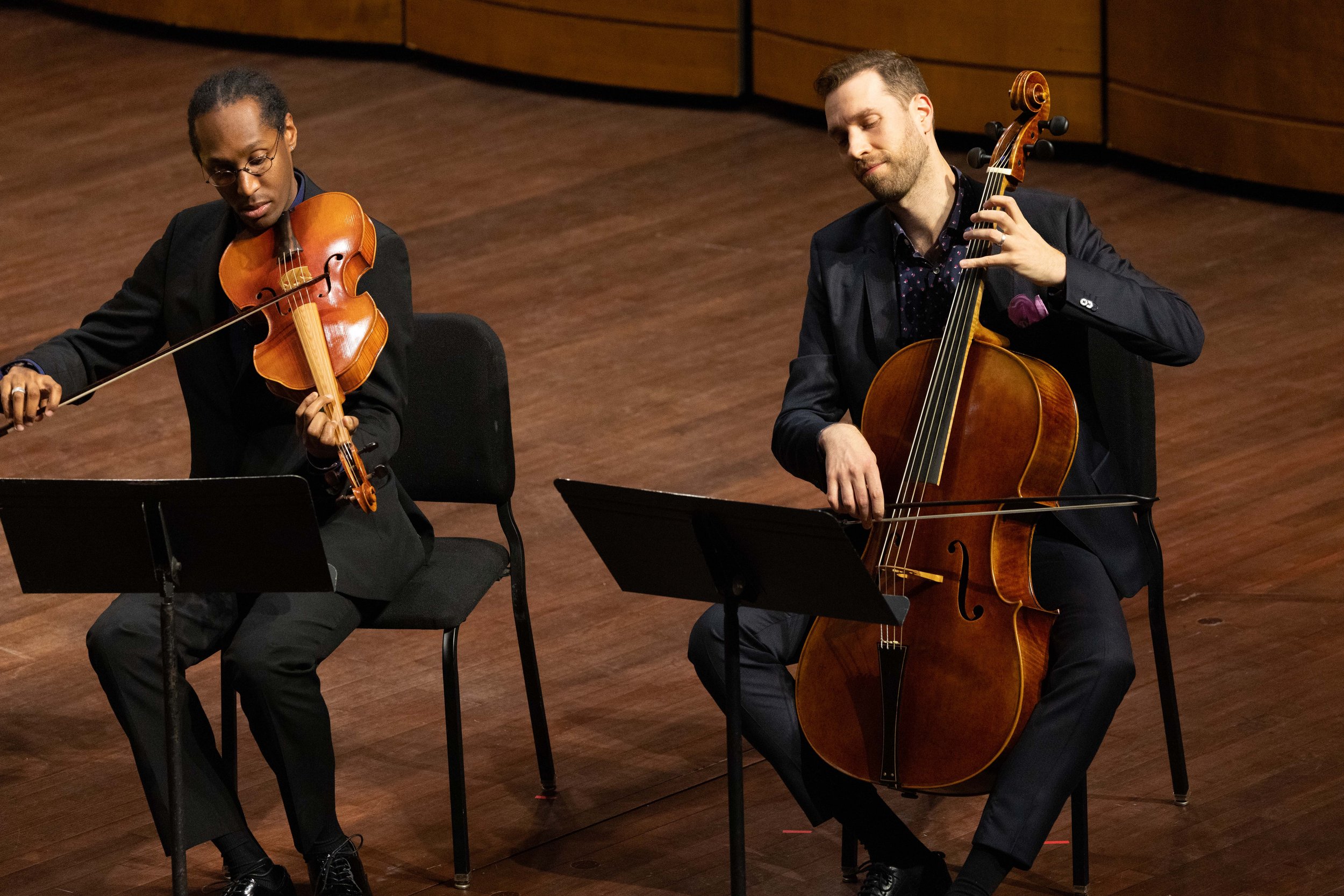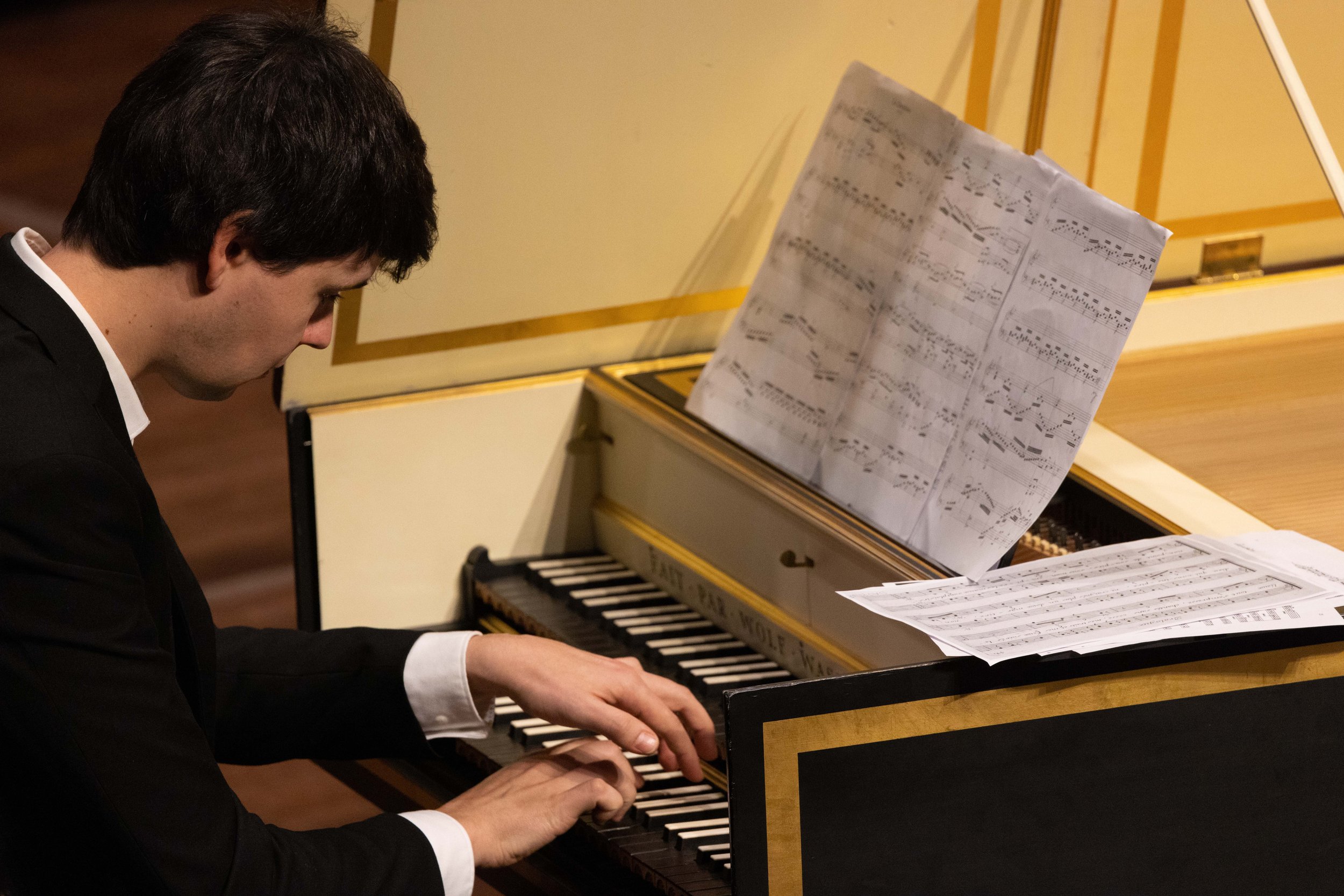Do you like classic Italian, French, or German opera? Semele (George Frederic Handel, 1744) is not that. Do you like baroque music and Handel’s The Messiah? That’s closer but with a big difference. Semele is not a religious event unless you are a believer in Roman/Greek gods that populate the opera. It’s secular and sexy, and it has tunes that are as much Broadway-like as opera aria-like, sung in English by the attractive, talented, and energetic Filene and Studio Artists, who are spending a summer with Wolf Trap Opera to hone their skills and be seen. As always, WTO’s opera selections are strongly influenced by the singing talent available that year, and this year’s cast for Semele is a very strong one. In fact, there are aspects to enjoy in each of the performance’s elements, a cornucopia of delights.
Semele (Ester Tonea, center) in send off to endless pleasure, endless love by reception well wishers. Photo by Ken Howard; courtesy of Wolf Trap Opera.
The first time my son listened to Bizet’s Carmen, he said that it had too many pop tunes to be called an opera. Think of Semele as Handel’s Carmen. In fact, composer George Frederic Handel wrote it as an opera to be performed as an oratorio, and that is where it gets even more interesting for modern audiences. Performed as an opera gives directors an open palette for interpretation and staging. In Director Tara Faircloth’s hands we get very clever, creative staging…more later.
A popular saying when I was growing up in the South was “don’t get above your raisin’”. A lyric in a Lester Flatt song by that title, goes “don’t get above your raisin’, stay down to earth with me”, but what if one of you is a god. The mortal Semele, for reasons that can be contested – a high minded young woman wanting to elevate her position or a lovesick young woman wanting to be fully with her true love – tried to go above her raisin’. Semele is smitten by Jupiter (Jove), the king of the gods, and they begin an affair, but Semele moves beyond just having an affair with a god and wants to become a god. Juno, the jealous wife of Jupiter, schemes to have Semele extract a promise from her love that he will appear to her in god-like form; Semele believes this will make her immortal. Juno knows that seeing a god in their true form causes mortals to burst into flames, fait accompli for Juno. Semele, too inflamed with the possibility, will not heed Jupiter’s warning and becomes the victim of Juno’s revenge. There are several other engaging characters who have their own issues and add family intrigue. In the end, the Roman legend and composer Handel offer us a happy ending for all but Semele: in death she has born a child who is Bacchus, god of wine-making and fertility, which makes everyone believe their troubles are over. I’d be happy to settle there, but references tell us he was also the god of insanity and madness. Clunk. So, was Handel’s message that good things come from extending yourself, or was it don’t get above your raisin’?
The jilted Prince Athamas (Kathleen Felty) being approached by the love-struck Ino (Emily Treigle). Photo by Ken Howard; courtesy of Wolf Trap Opera.
My guess is that Handel wrote Semele like all his operas as vehicles for excellent singers to show off singing his arias. Regardless of the opera, a strong appeal of WTO performances is the fresh, invigorating experience of hearing the emerging artists who perform. The soloists for Semele, with one exception, were drawn from the Filene Artists and the chorus and supernumeraries came from the Studio Artists. Handel filled this opera with several characters who get to sing beautiful arias, but make no mistake, this is Semele’s opera and a chance for that soprano to shine. Soprano Ester Tonea sang the role of Semele. Ms. Tonea was a Winner in 2022 in the prestigious Metropolitan Opera Laffont Competition. As Semele, she demonstrated a big instrument, capable of vocal fireworks, with clarity and a pleasing tone. Her singing was bright and beautiful, but I suspect baroque style is not yet her forte; melisma, in general, was in short supply in this production, perhaps purposively. Her rendition of “Endless pleasure, endless love” was engaging, and her “Sleep, why dost thou leave me” was a truly lovely performance; and her aria “Myself I will adore” was delivered with an appealing light comic touch. I thought she played Semele with more of a wives of Hollywood appeal than a Romeo and Juliet one. I hope she returns to the DC area for performances frequently; this young soprano appears to have a high ceiling.
Juno (Emily Treigle) plotting with Iris (Véronique Filloux). Photo by Ken Howard; courtesy of Wolf Trap Opera.
Mezzo-soprano Emily Treigle performed in two roles, as Juno and as Ino, sister of Semele who purloined for Prince Athamas, Semele’s jilted betrothed. Ms. Treigle was a Winner in the 2021 Laffont Competition, and she proved to be quite the actress. She portrayed the roles as different personalities and was completely believable in each. Her singing was also impressive in each, and her arias showed an appealing array of colors in her voice. Juno was assisted by her messenger Iris in her efforts to bring down Semele. Director Faircloth turned what is largely a minor role of Iris into a bit of a showstopper, casting soprano Véronique Filloux as Iris, decked out in a colorful uniform that a circus master might have worn. Ms. Filloux complemented her on point singing with energy, humor, and impressively deft choreographed movements. Ms. Treigle and Ms. Filloux were well matched and played effectively off each other on stage.
Juno (Emily Treigle) tempts Somnus (Eric Lindsey), the god of sleep, with a reward for his help. Photo by Ken Howard; courtesy of Wolf Trap Opera.
Handel often wrote to have castrati sing roles in his operas; today these roles are most often performed by countertenors or by mezzo-sopranos in a pants role. Mezzo-soprano Kathleen Felty, who was previously in the Santa Fe Opera Apprentice Program, sang the role of Athamas well and anchored the first scene with the stature and manner to make it believable. Her sad aria “Your tuneful voice my tale would tell” was well done and her duet with Ms. Treigle, “You’ve undone me”, was especially enjoyable.
Semele (Ester Tonea) sleeps in the sensuous abode that Jupiter has built for his mistress. Photo by Ken Howard; courtesy of Wolf Trap Opera.
Lunga Eric Hallam, a tenor from South Africa, was a standout as Jupiter, definitely an emerging artist to take note of. He sang with clarity and sweetness in all his arias, with romantic appeal singing “I must with speed amuse her” and a special pathos in “Whither is she gone, unhappy fair “. Another two-role player was bass Eric Lindsey who played Cadmus, King of Thebes and father of Semele and Somnus, god of sleep. Mr. Lindsey was effectively an officious father and a funny Somnus. I especially appreciated the beautiful tone of his voice in the slow singing as Somnus. The lone Studio Artist appearing as a soloist in this performance was tenor Samuel Krausz who gave us a joyful performance as Apollo announcing the happy ending. There are many enjoyable duets and ensemble numbers in Semele, and another delight of this production were Handel’s choral numbers, sung marvelously by the Studio Artists; kudos to Chorus Master David Hanlon.
Jupiter (Lunga Eric Hallam) embraces Semele (Ester Tonea) in a love scene. Photo by Ken Howard; courtesy of Wolf Trap Opera.
Handel’s music, as well as his arias, are exceptional in Semele. The music was delivered in pleasing, baroque simplicity by Conductor Timothy Long and the Wolf Trap Orchestra, limited to twenty-something players by the relatively small orchestra pit in The Barns. Conductor Long maintained the musical pace in a timely manner, showcasing the emerging artists, keeping the music much in the accompaniment background. This production was somewhat trimmed from the full production of the opera.
Semele’s story is presented in broad strokes, and this emphasizes the individual scenes, more than the flow. Director Faircloth’s staging took advantage of this aspect and presented a different styled staging for each scene. Her attention to detail added comic touches in each. I was delayed by a traffic jam getting into my seat, arriving at performance time. With the stage still empty, and the music yet to begin, I thought more late arrivers were flowing in behind me, but it turned out to be the cast flowing into the temple on stage for a wedding service to begin. It was an effective beginning, immediately drawing me into the story. The dating and costume styles of each scene were different, perhaps to better connect with modern audiences and to show that the themes remain true across the centuries, or maybe just to make the opera more entertaining. Kudos to Ruth Varland for great work with the costumes and to Anne Nesmith for wigs and makeup. Lighting effects were well done by Mark Stanley, and special kudos to Cameron Anderson for a striking and effective scenic design; each was a bit of a surprise and the scene opening in the quarters Jupiter had prepared for Semele was a standout.
Apollo (Samuel Krausz) and Iris (Véronique Filloux) appear in the center to assure everyone their troubles are over. Photo by Ken Howard; courtesy of Wolf Trap Opera.
So, Wolf Trap Opera’s Semele, that opens their summer season of fully staged operas, offers Handel’s beautiful, tuneful arias beautifully sung by a multitude of enthusiastic emerging artists, supported by the fine playing of his marvelous music, with enjoyable choral numbers, all enhanced by an engaging, creative staging. Yes, I think a cornucopia of delights describes it very well.
The Fan Experience: Semele is scheduled for performances on June 23, 25, 29, and July 1 in The Barns at Wolf Trap. The opera is sung in English with supertitles in English shown overhead; with one intermission, run time was about 2.5 hours. Limited tickets are available for remaining performances. WTO has also scheduled fully staged productions of Faust (The Barns) and Don Giovanni (Filene Center) this summer as well as several concerts/recitals; check their website for details.
One aspect of Wolf Trap Opera’s productions worth noting under the management of Lee Anne Myslewski, Wolf Trap Vice President of Opera and Classical Programming, is their commitment to diversity. Among others, Semele includes a female stage director, a South African tenor, and a conductor of Muscogee Creek and Chocktaw descent. This commitment is very much appreciated.
The Barns is an excellent venue for opera, intimate with good acoustics. Even the seats at the back and in the balcony are relatively close to the performers, but some of those in the very front and in the back on the floor lack a view of the supertitles. The floor seats are not tiered but those in the balcony are. Food and beverages are available before the performances and during intermissions. During DC’s hot and humid summers, it has excellent air-conditioning. Parking is free, plentiful and is easy-in/easy-out. There can be traffic slowdowns approaching The Barns on days when Filene performances are scheduled at the same time, so leave some extra time for commuting on those days.




